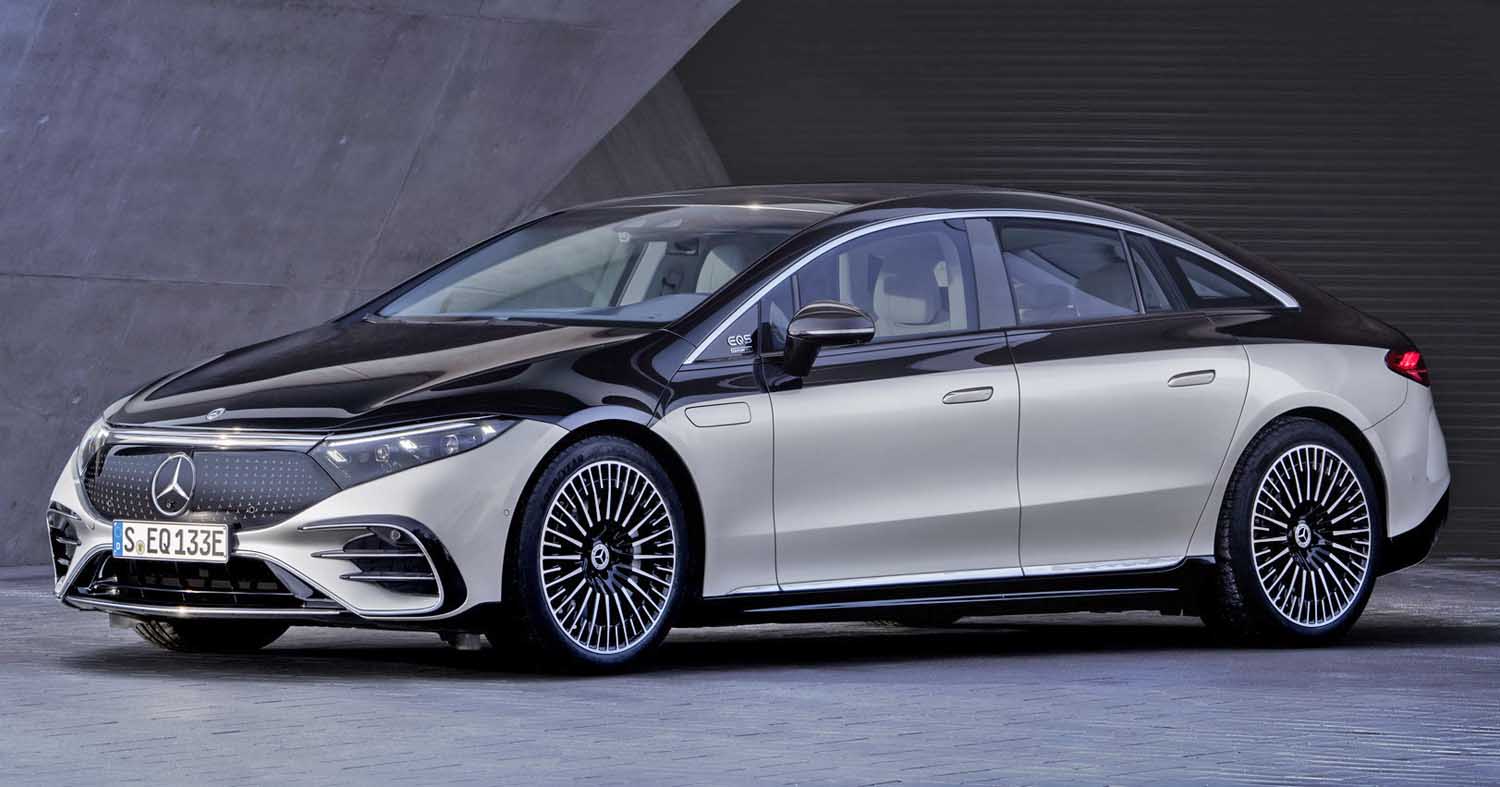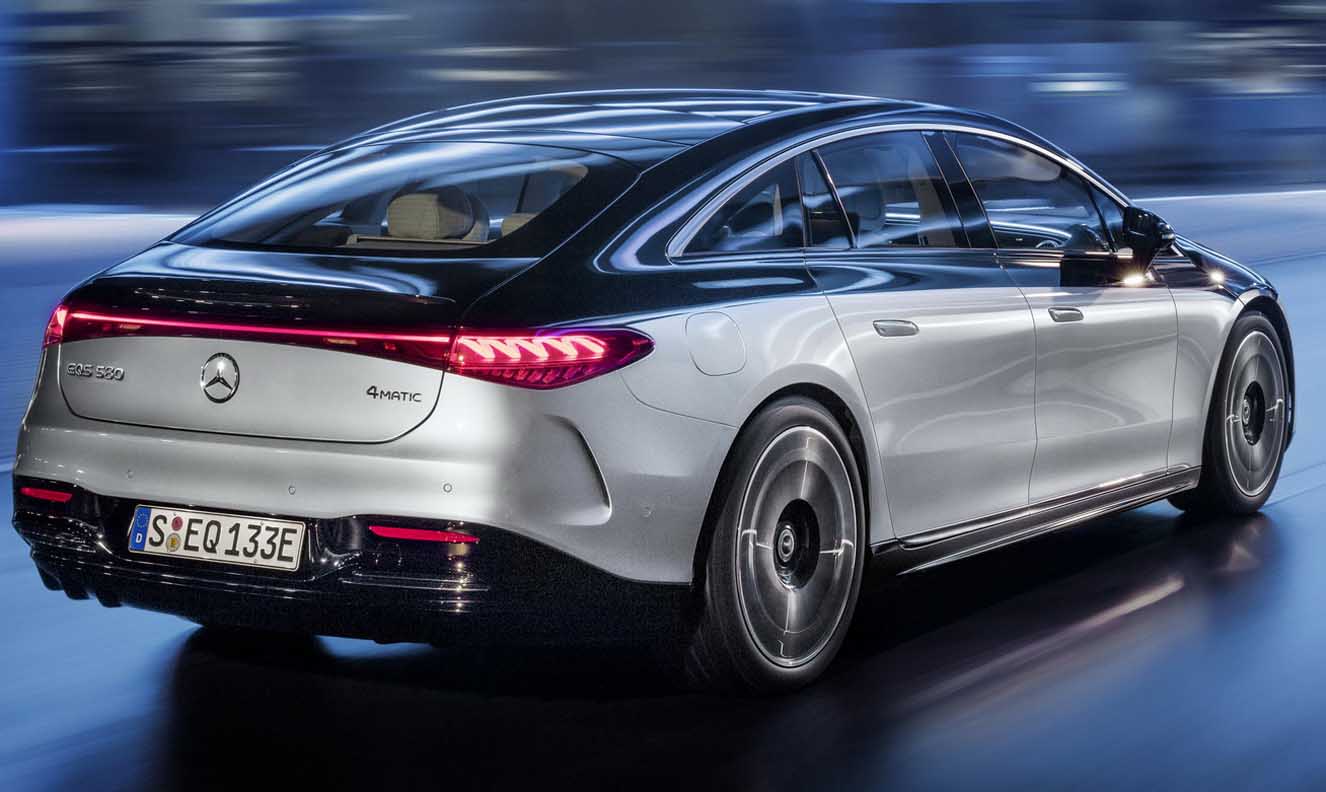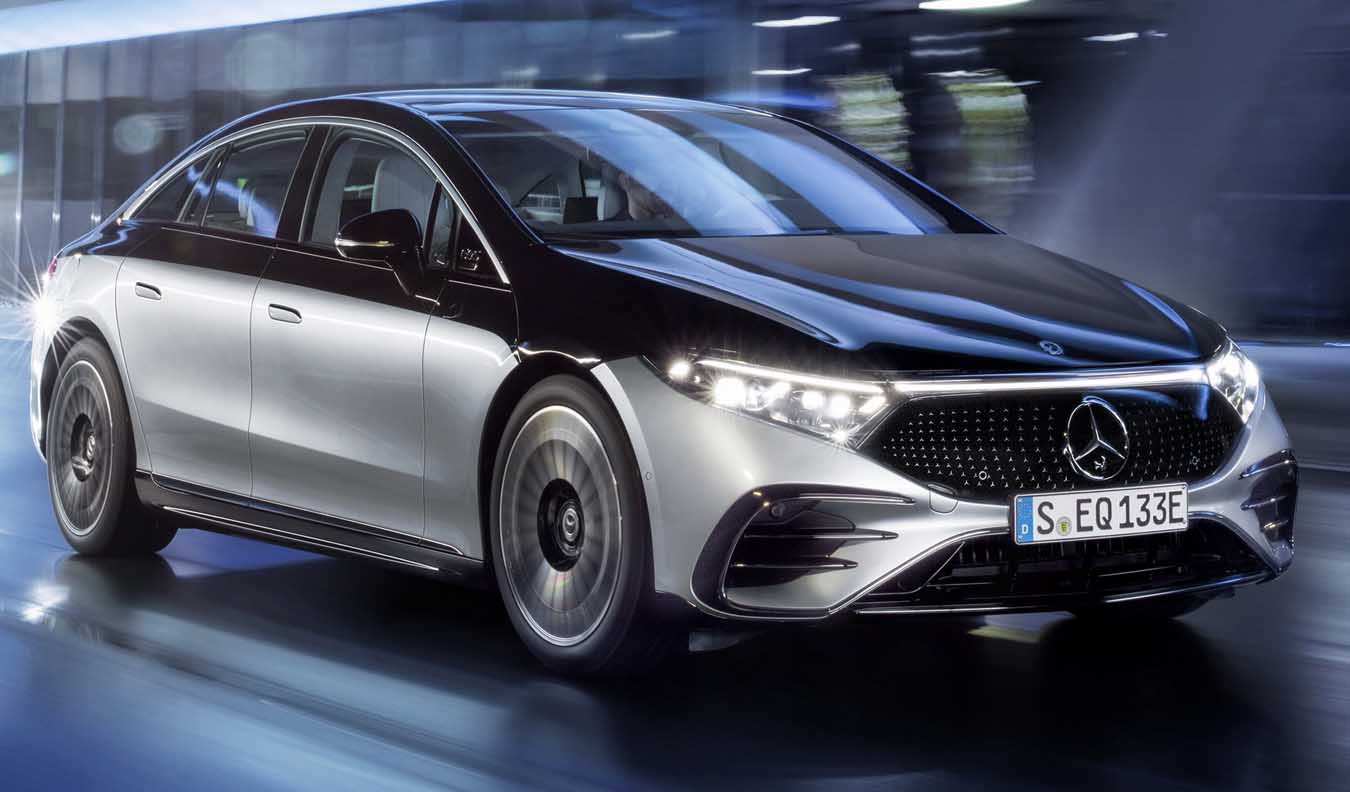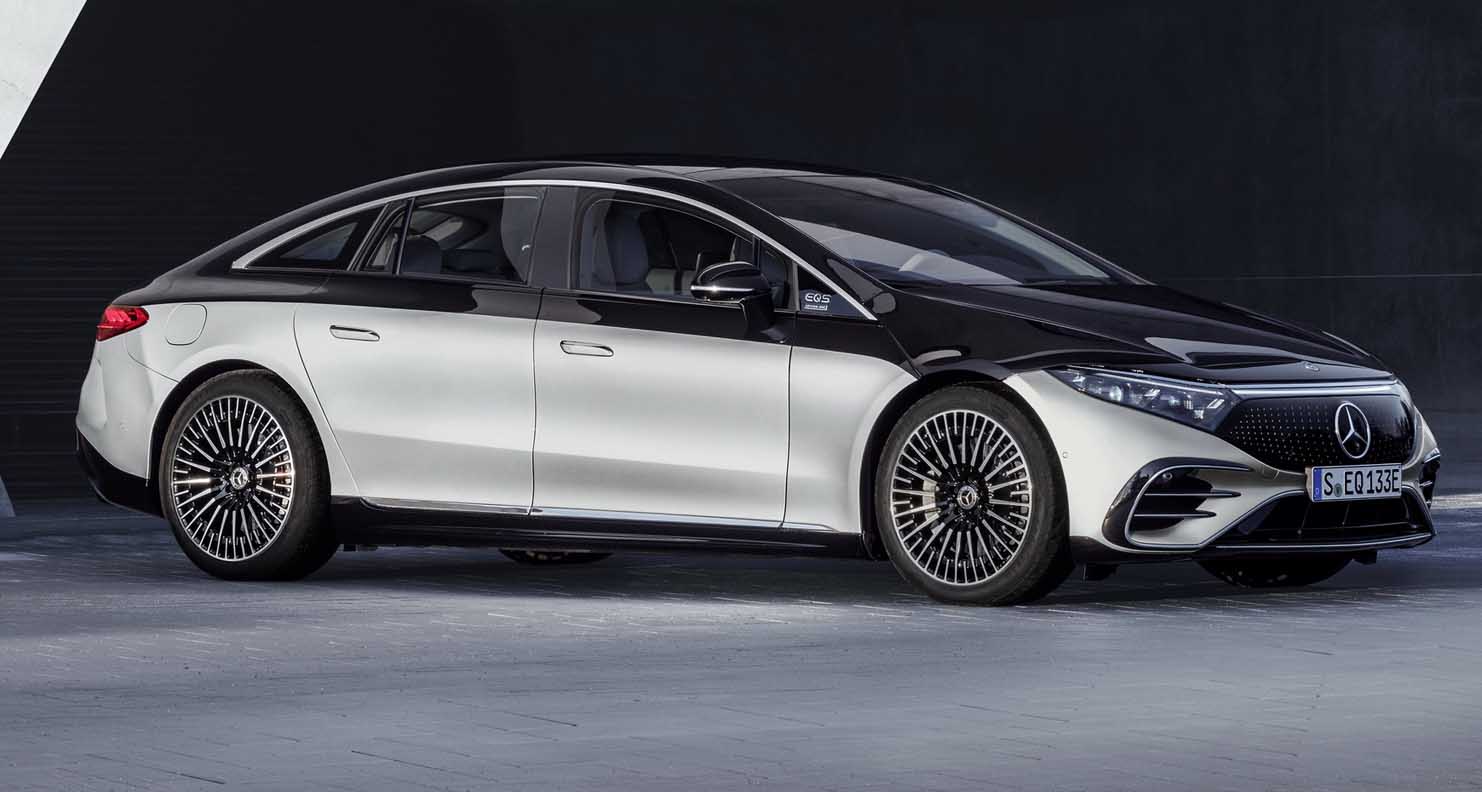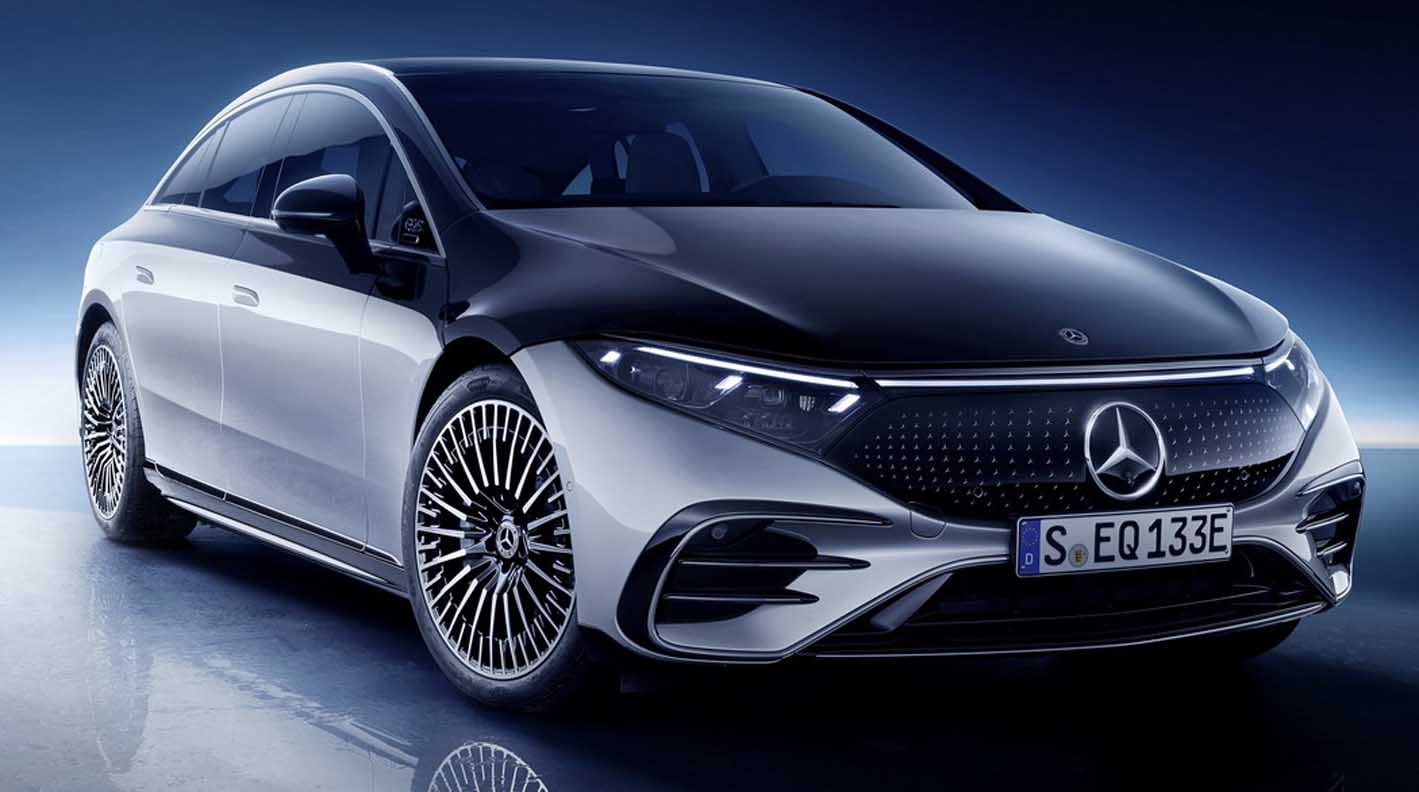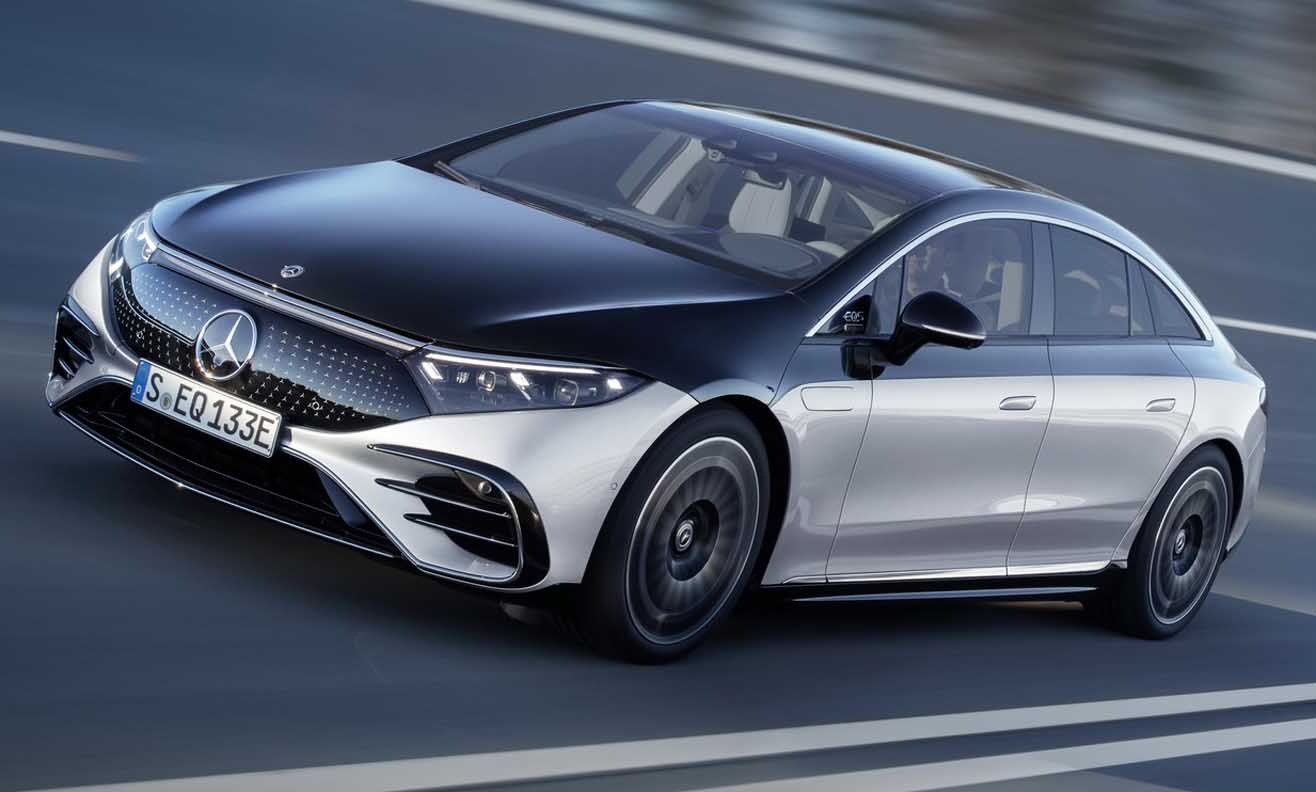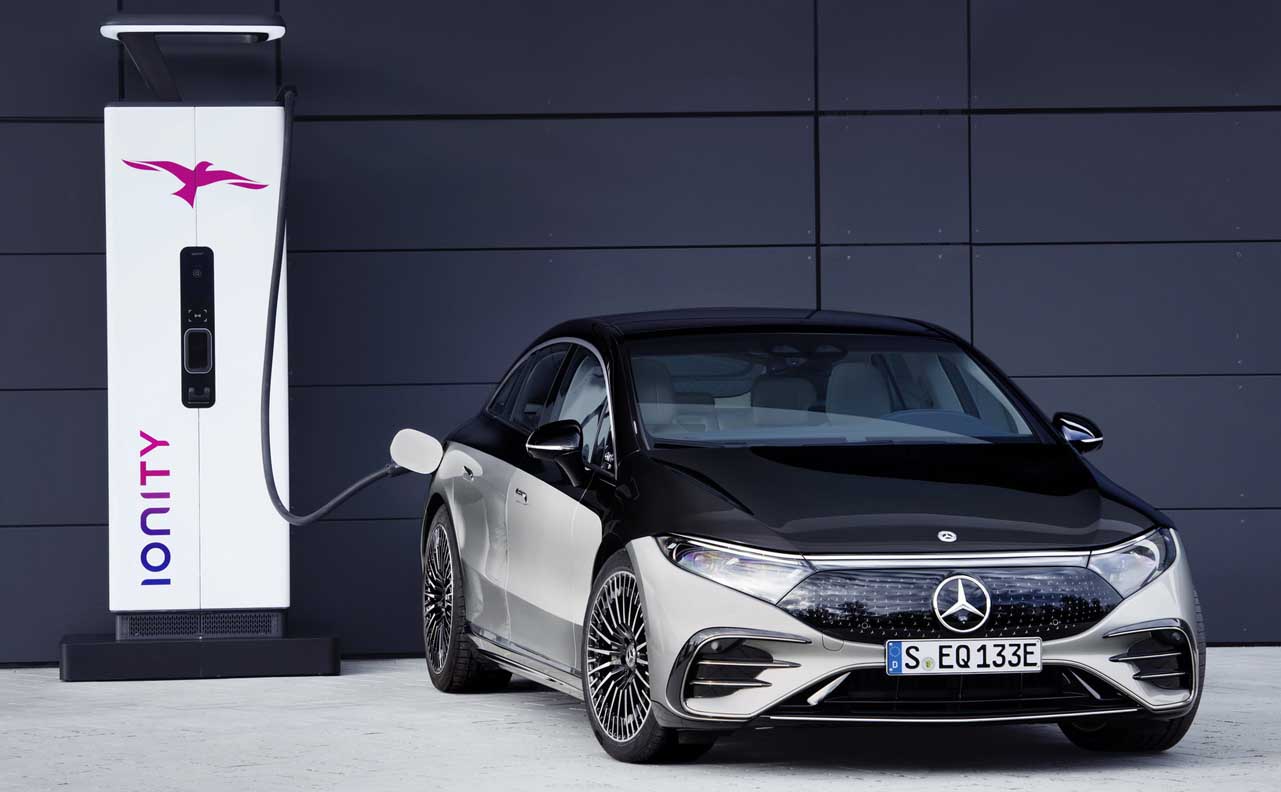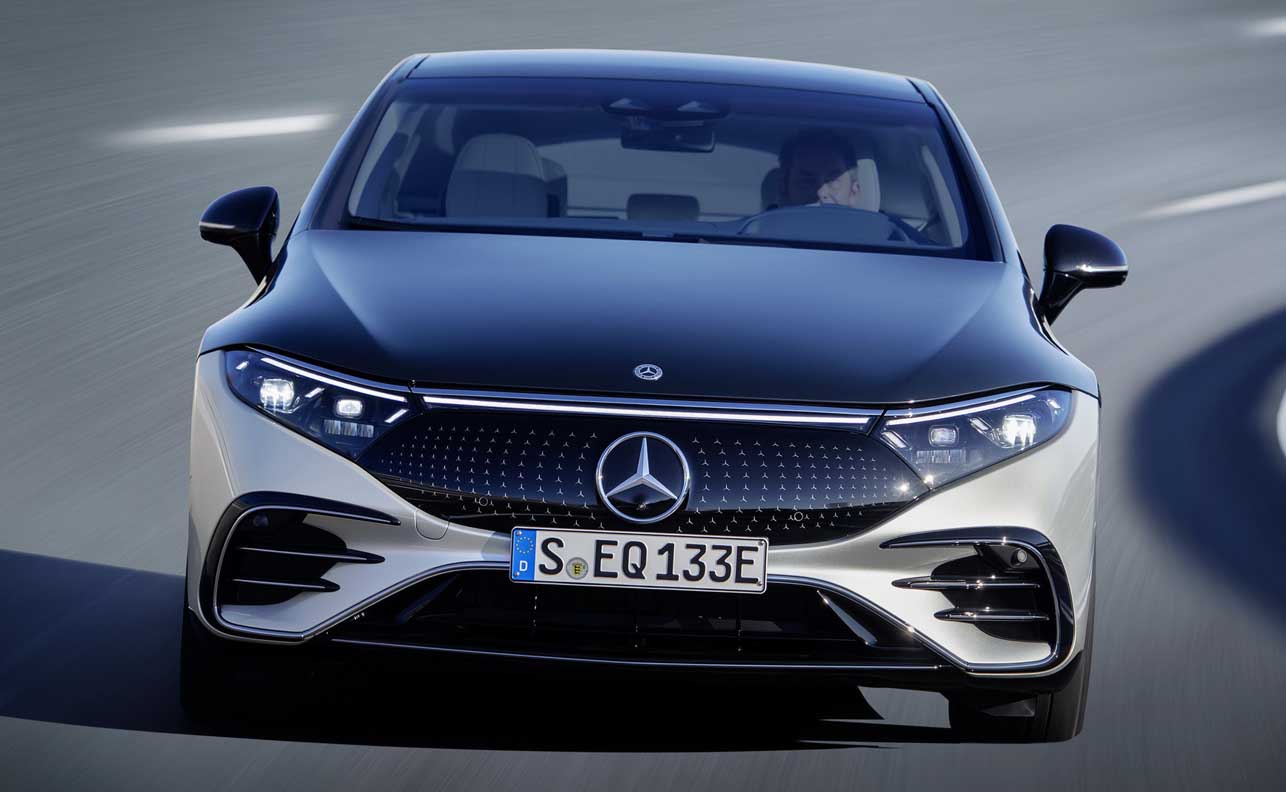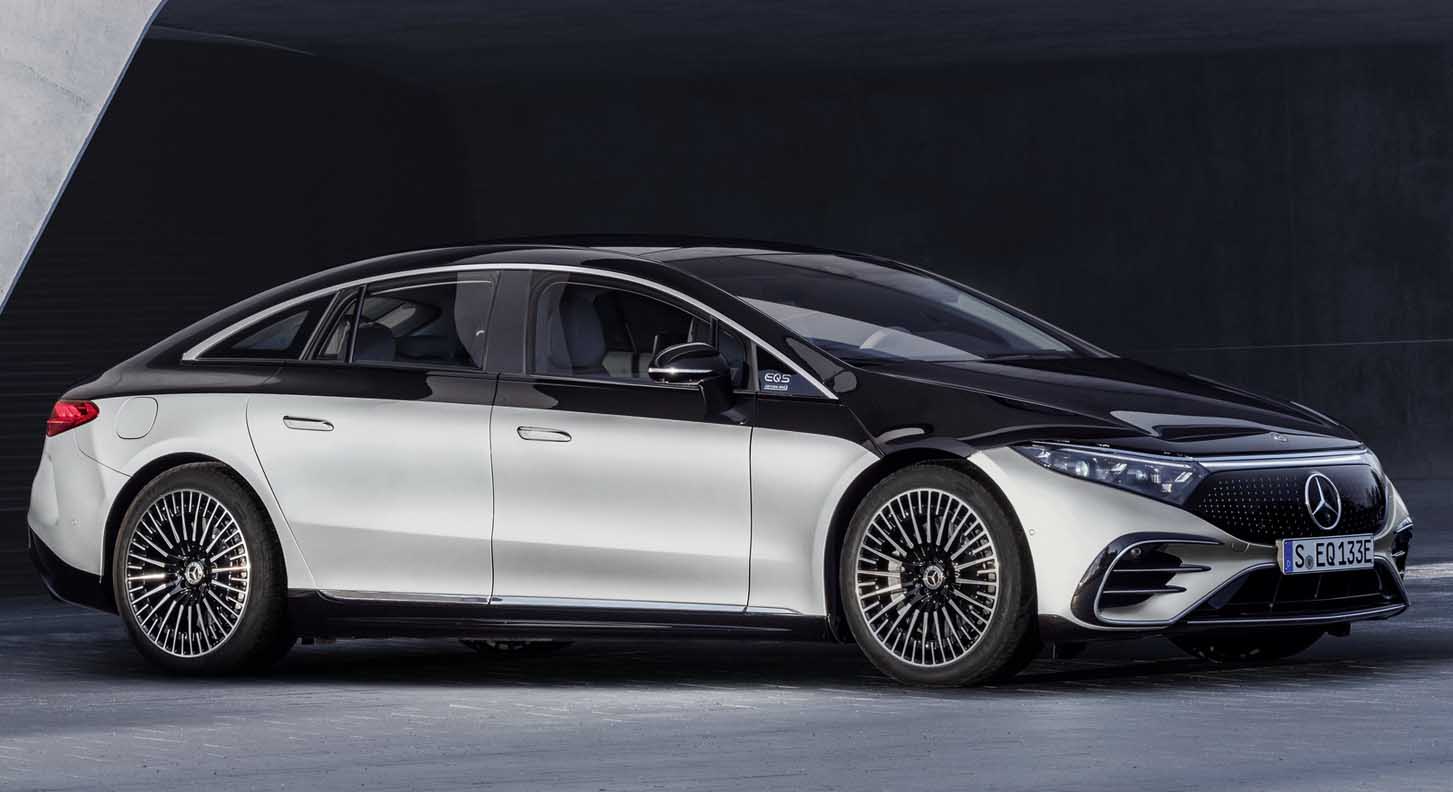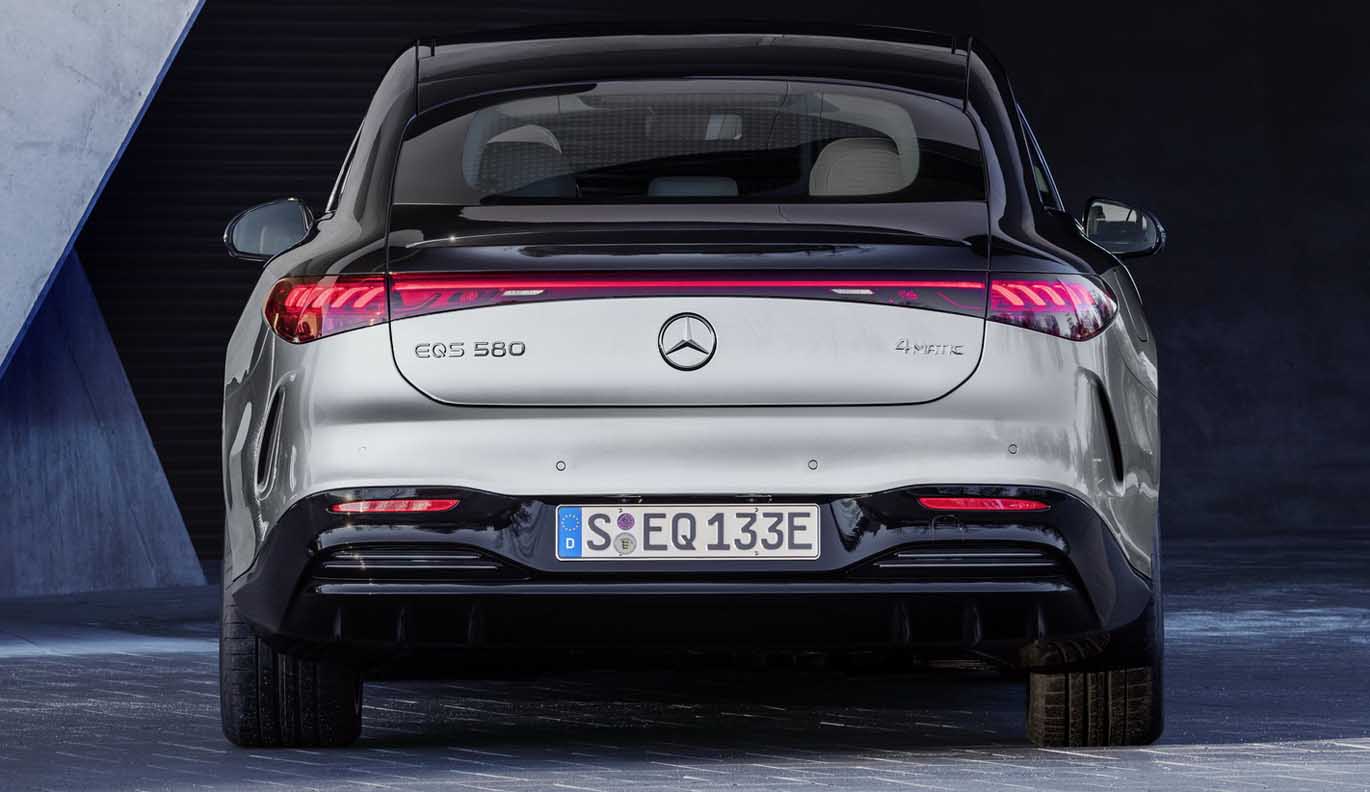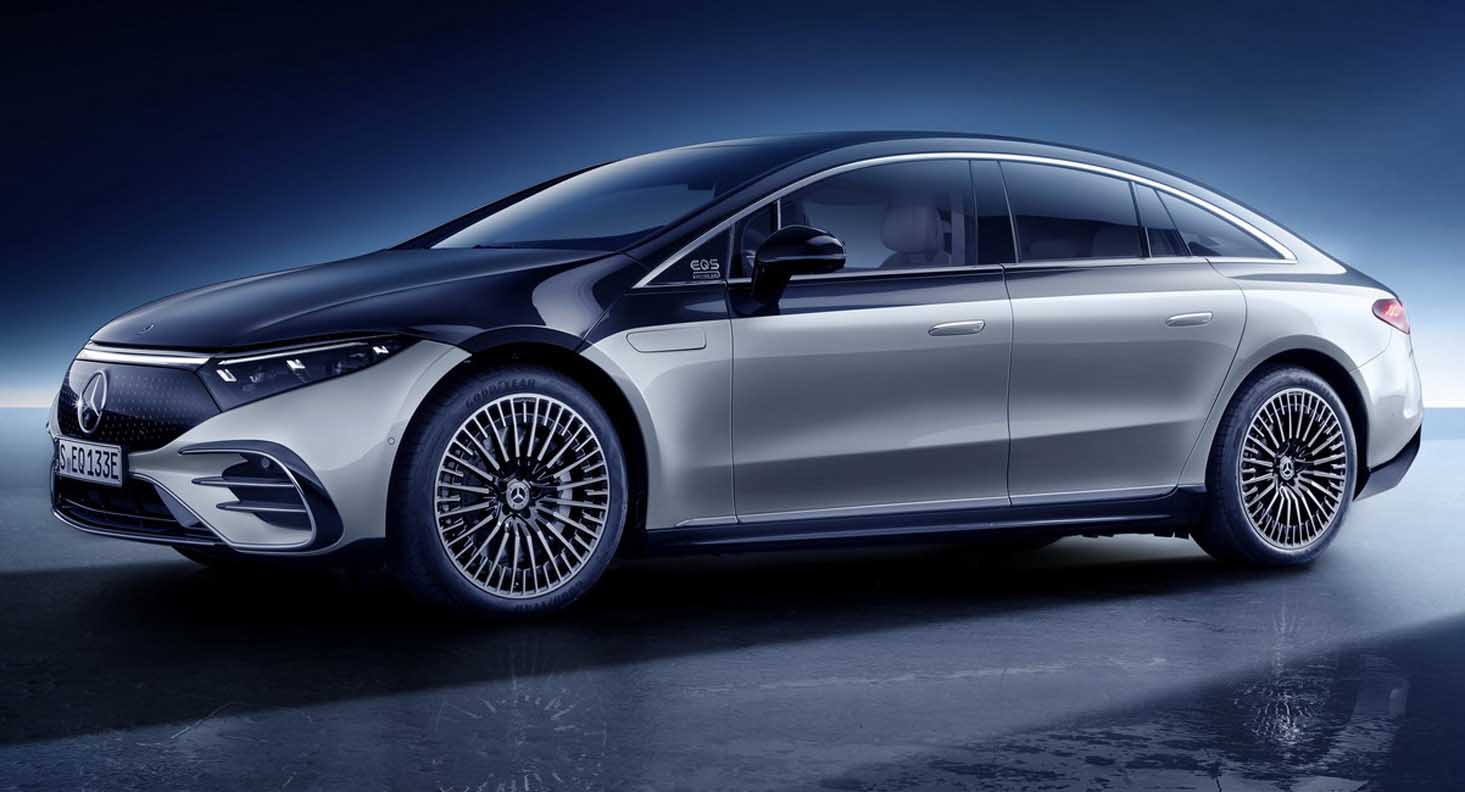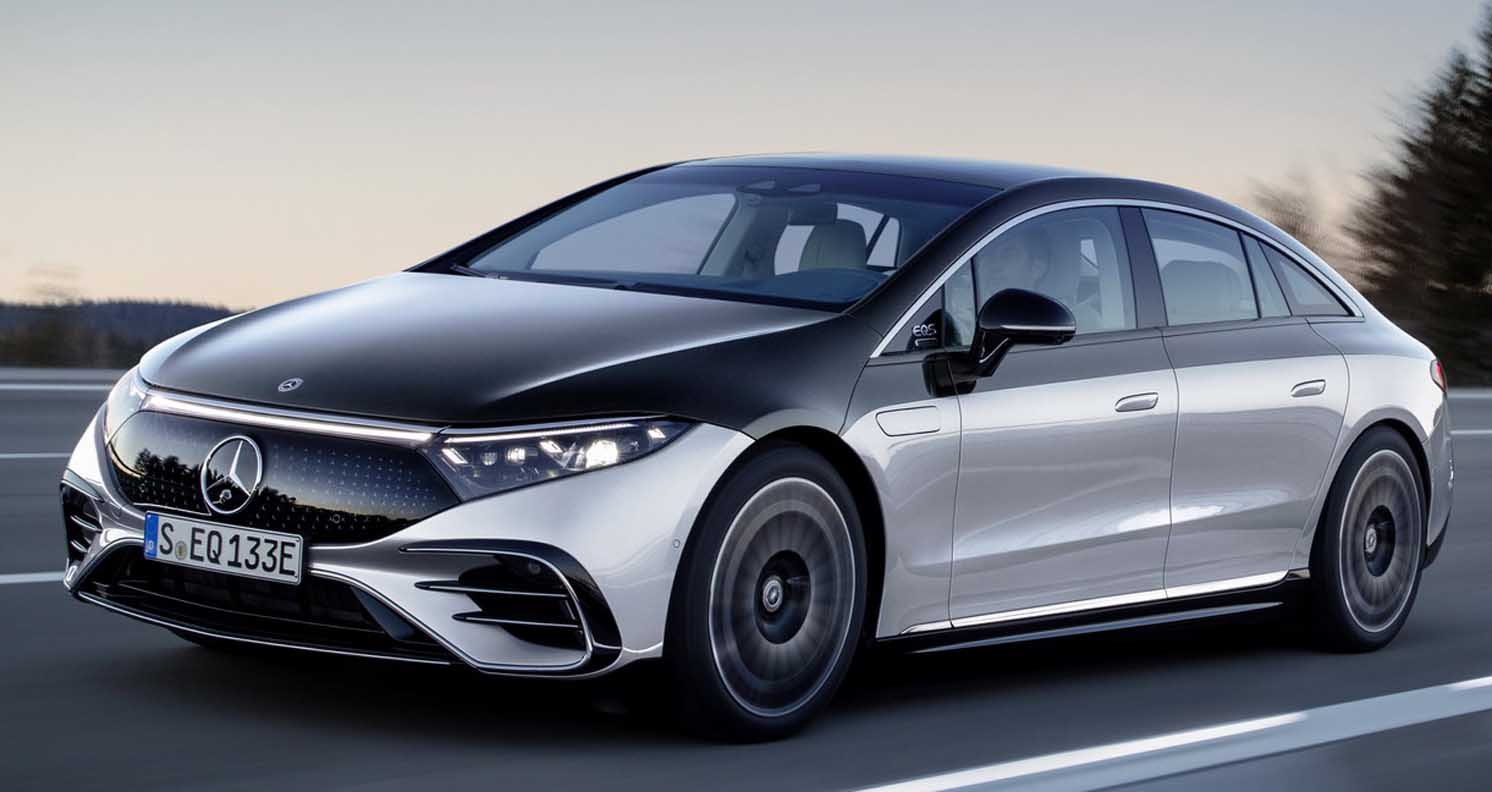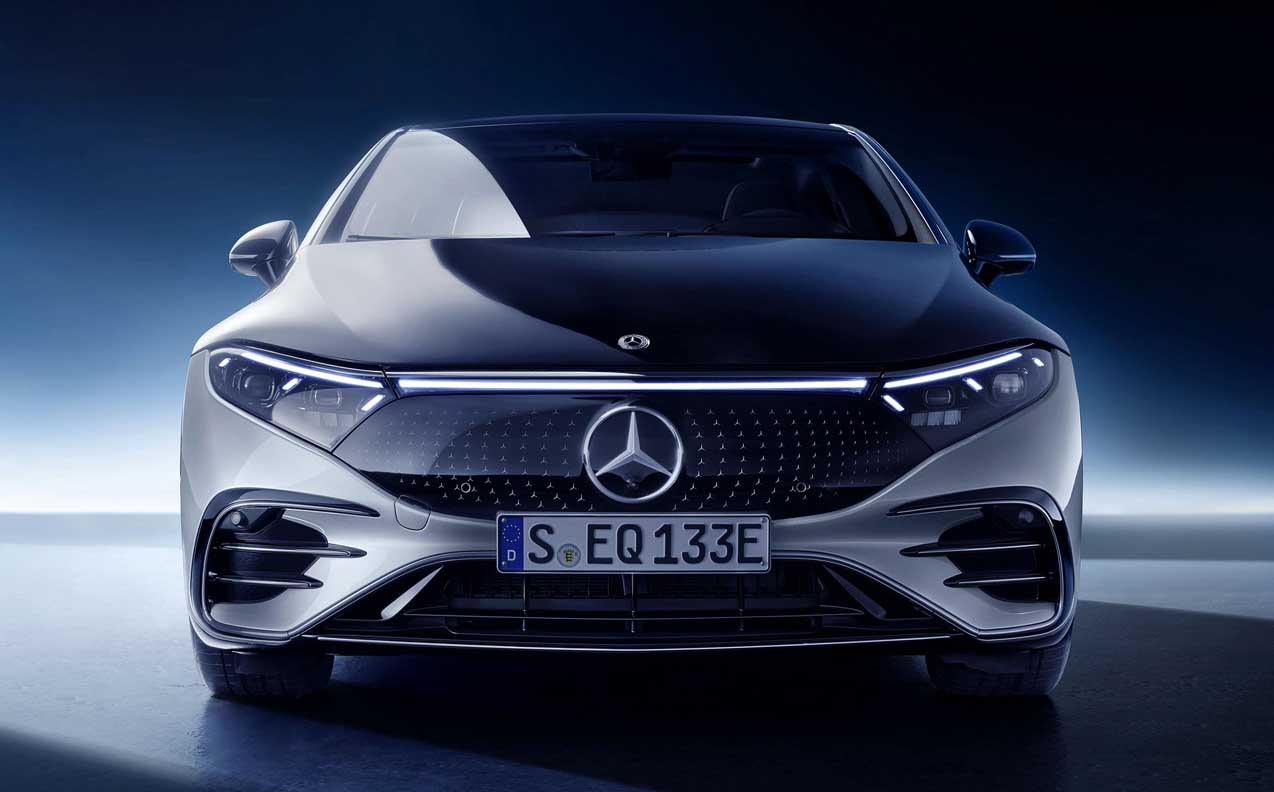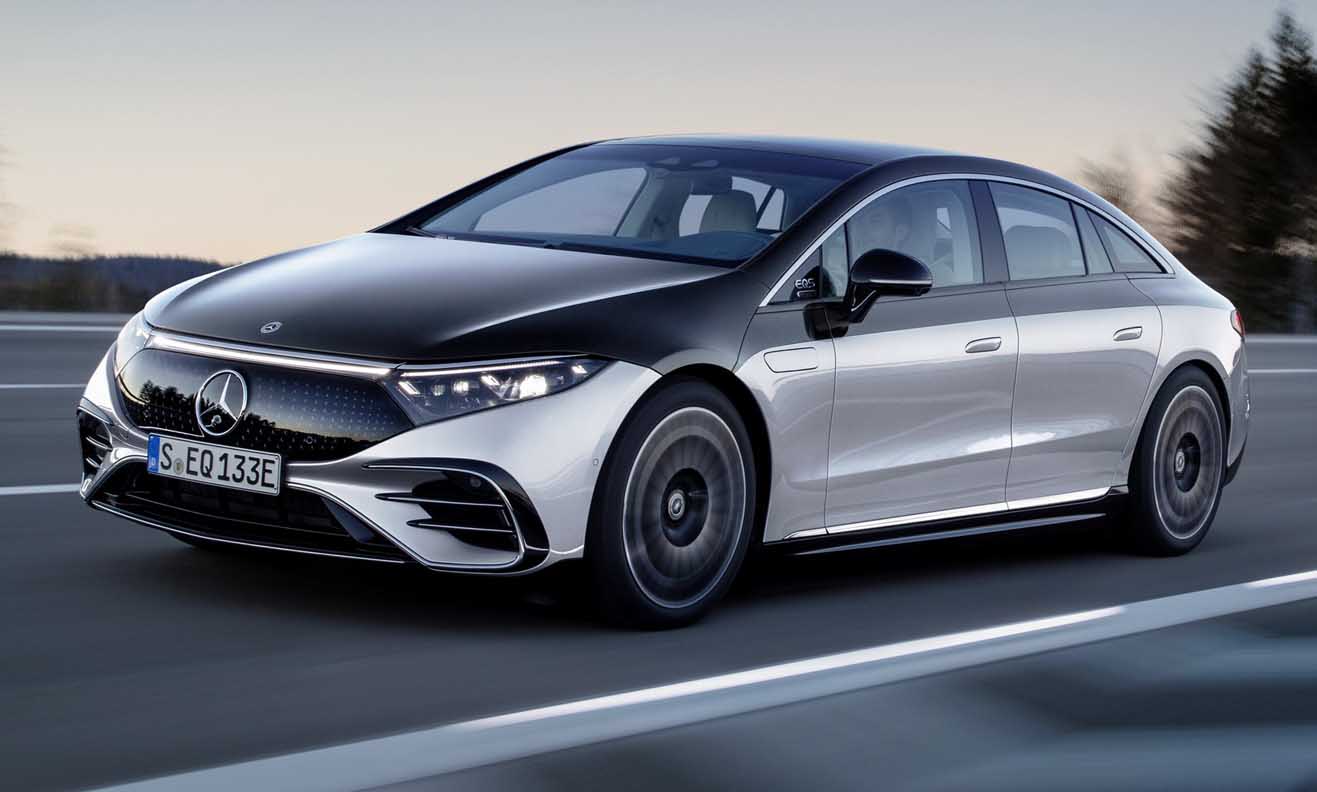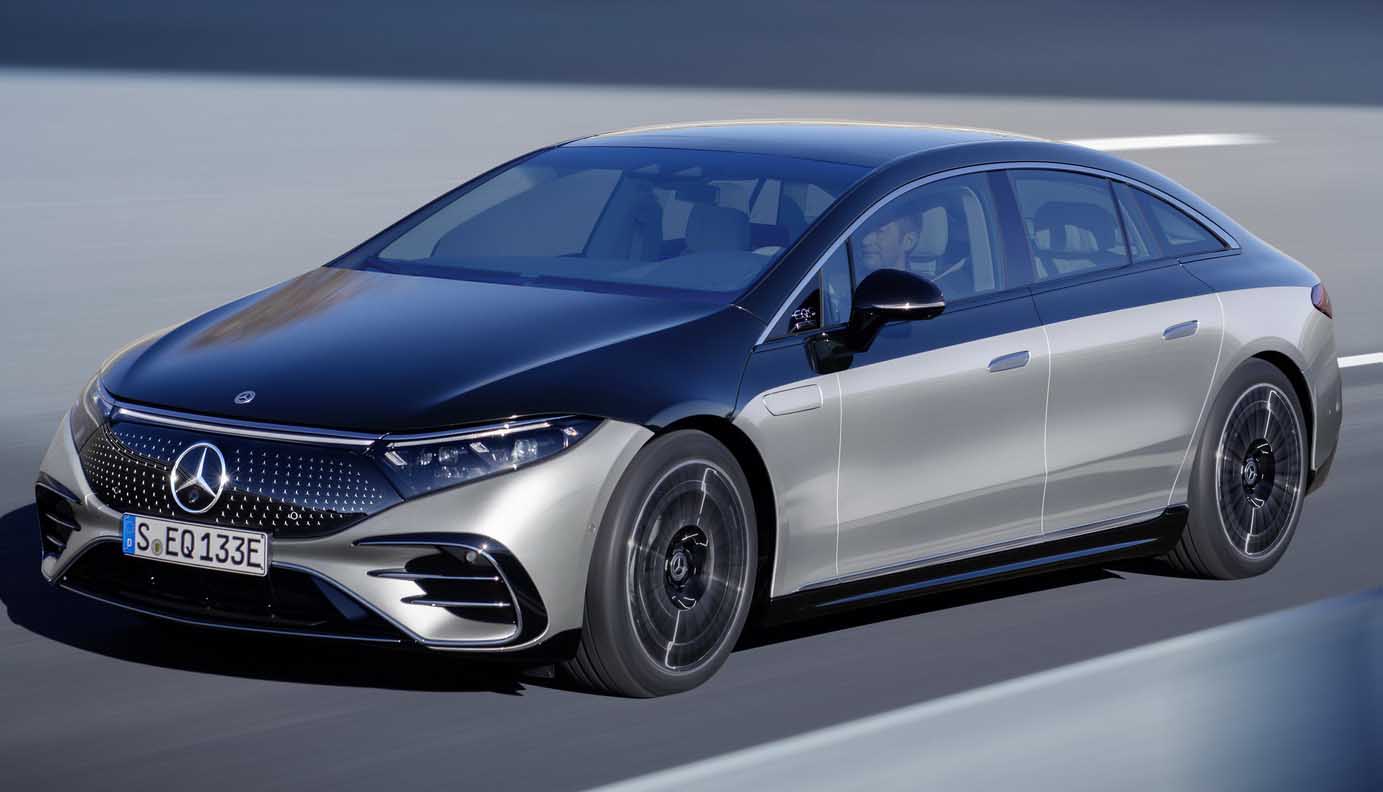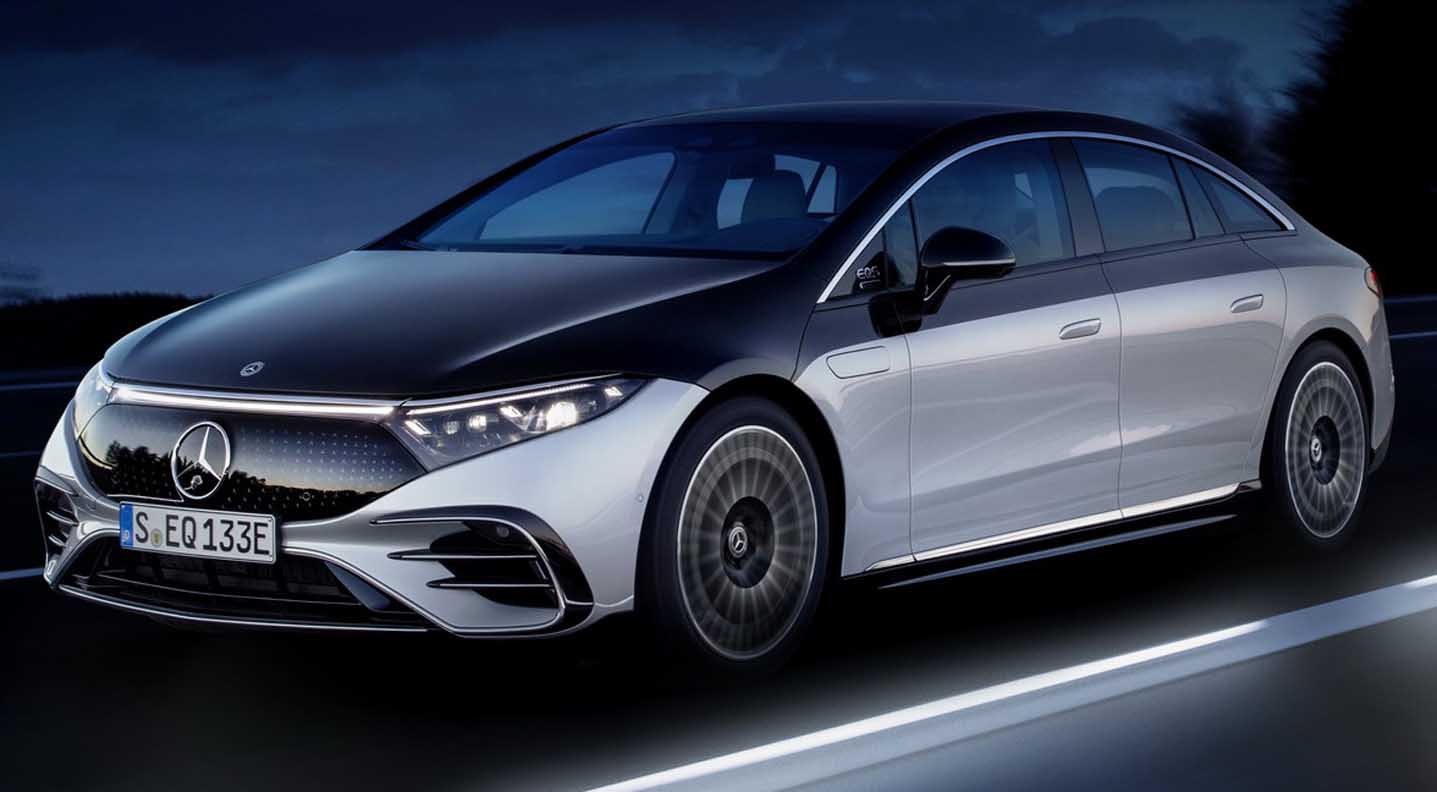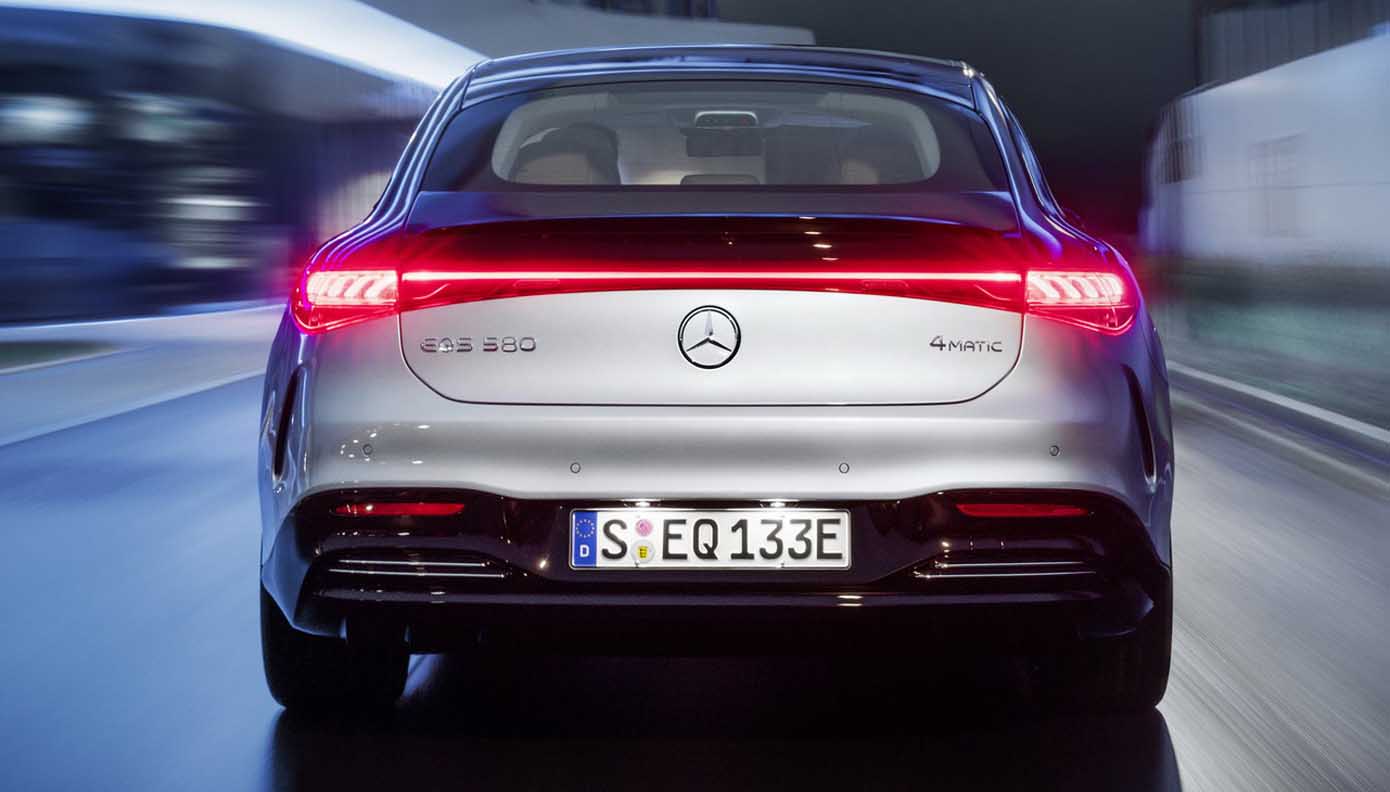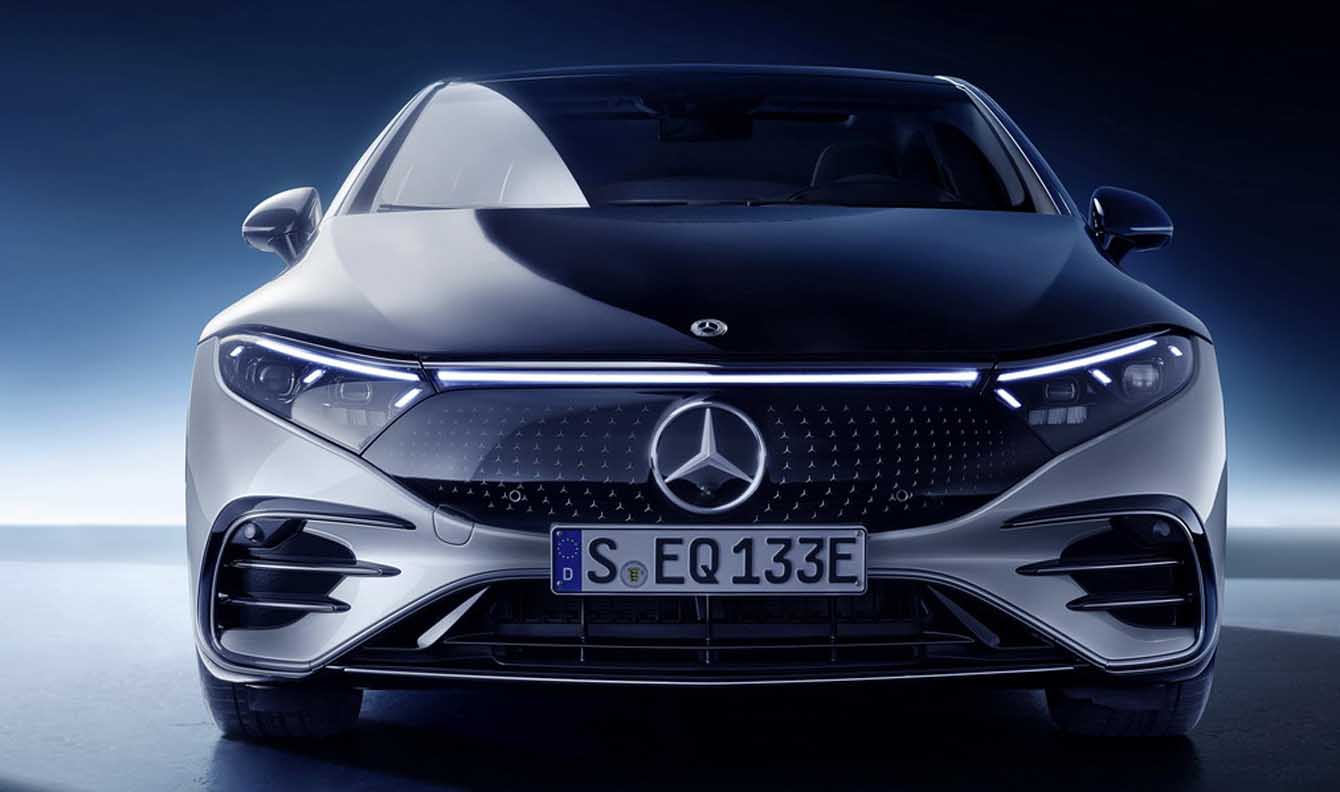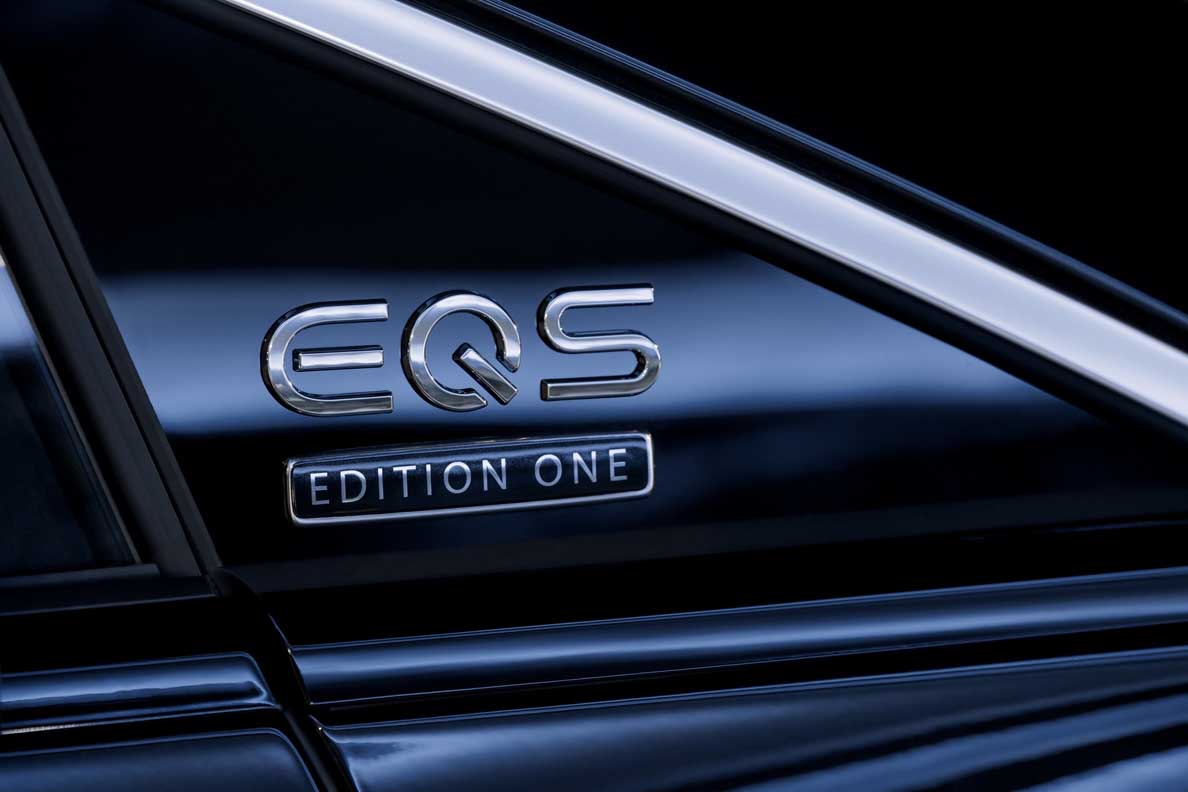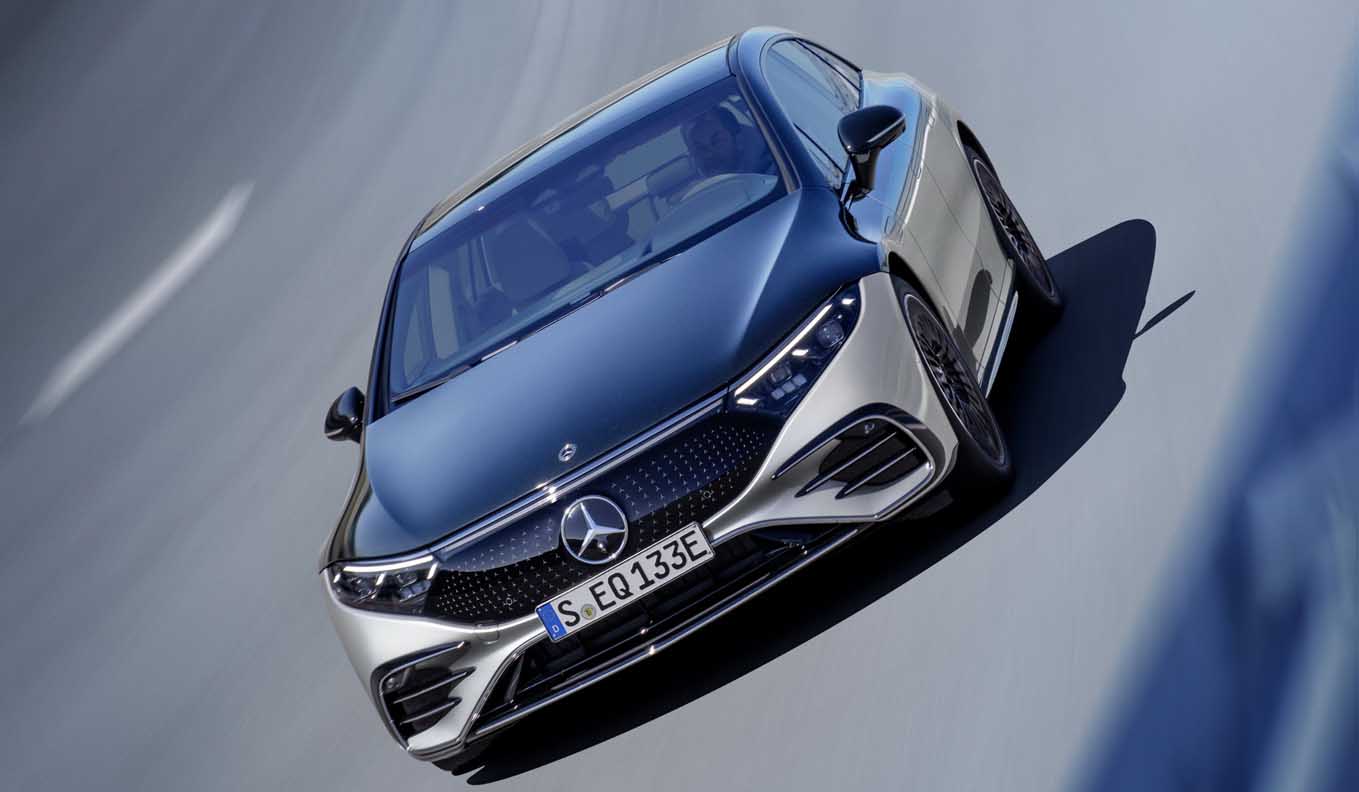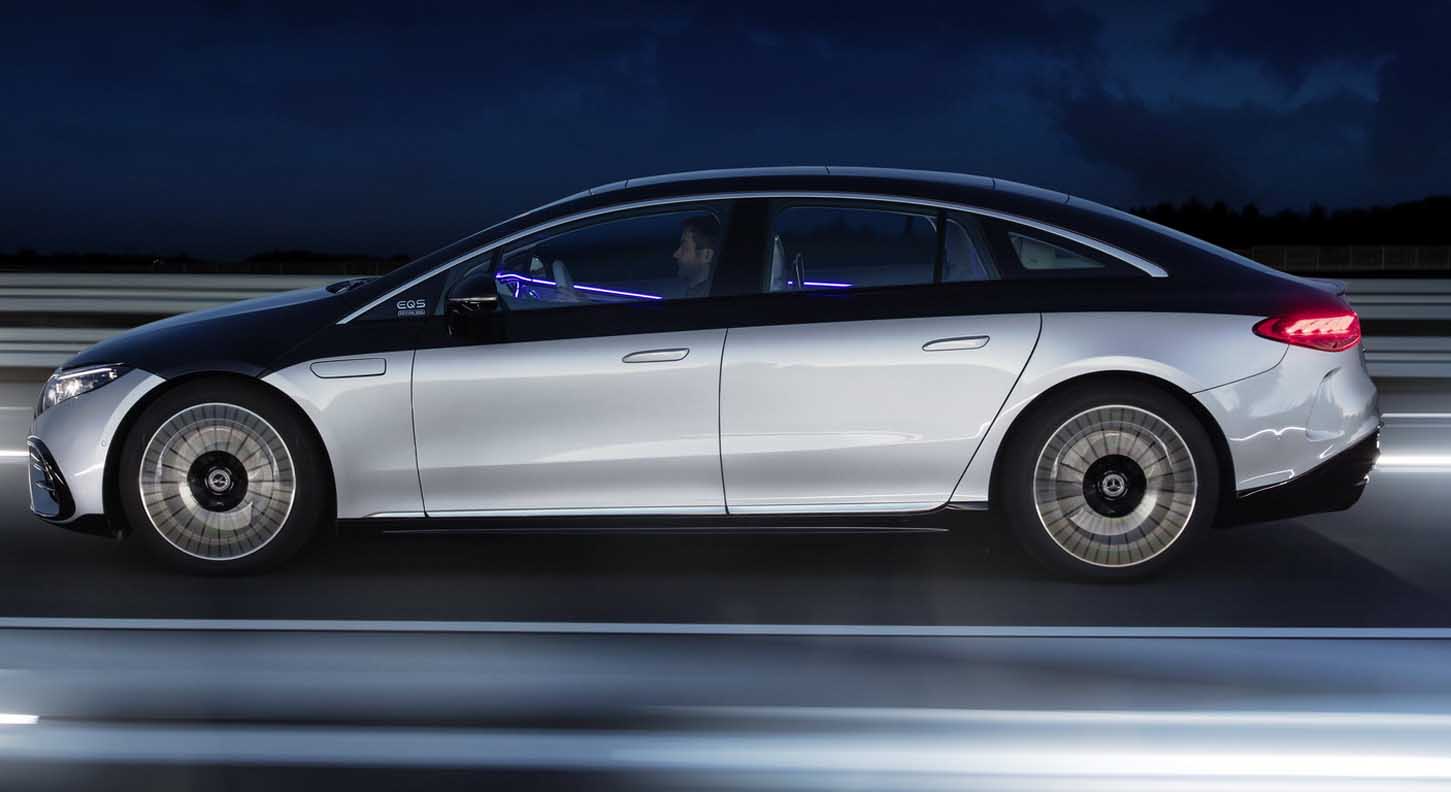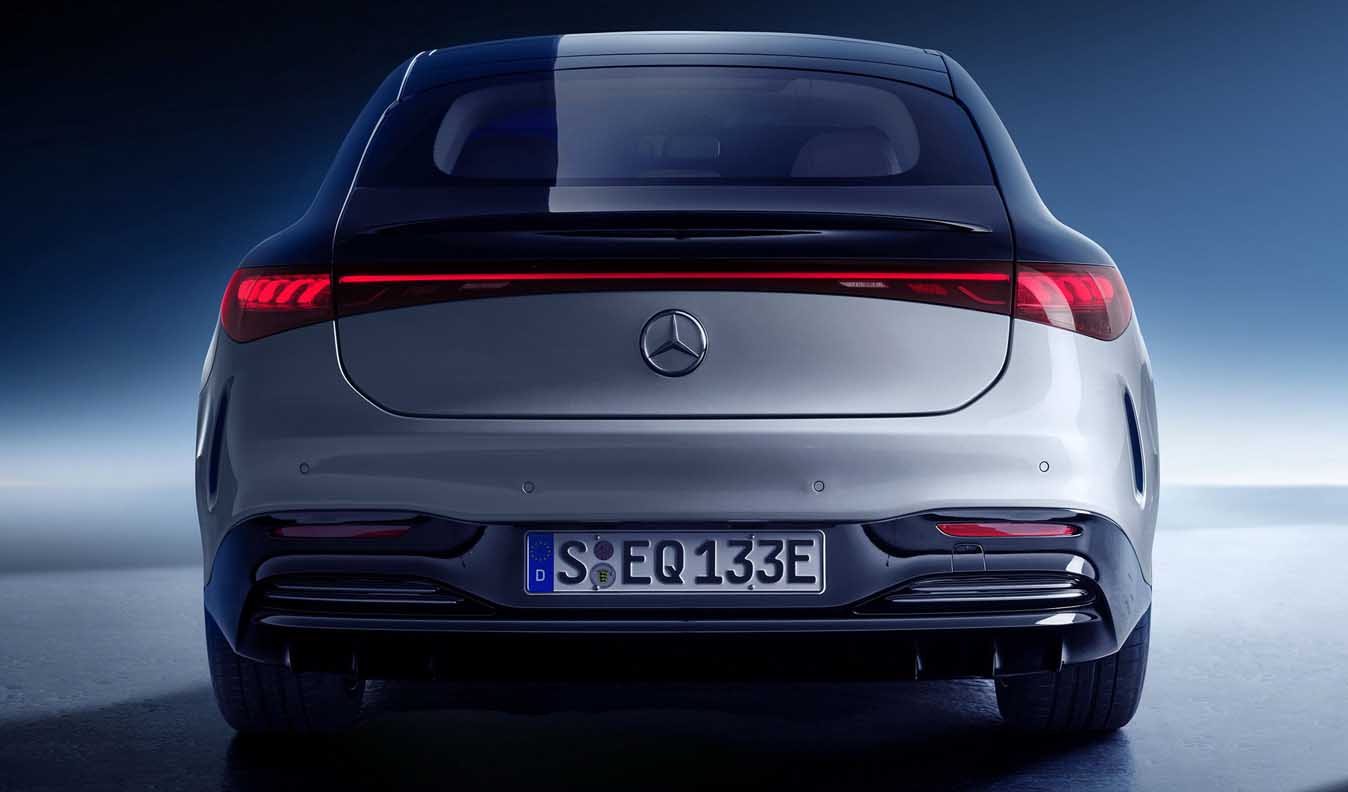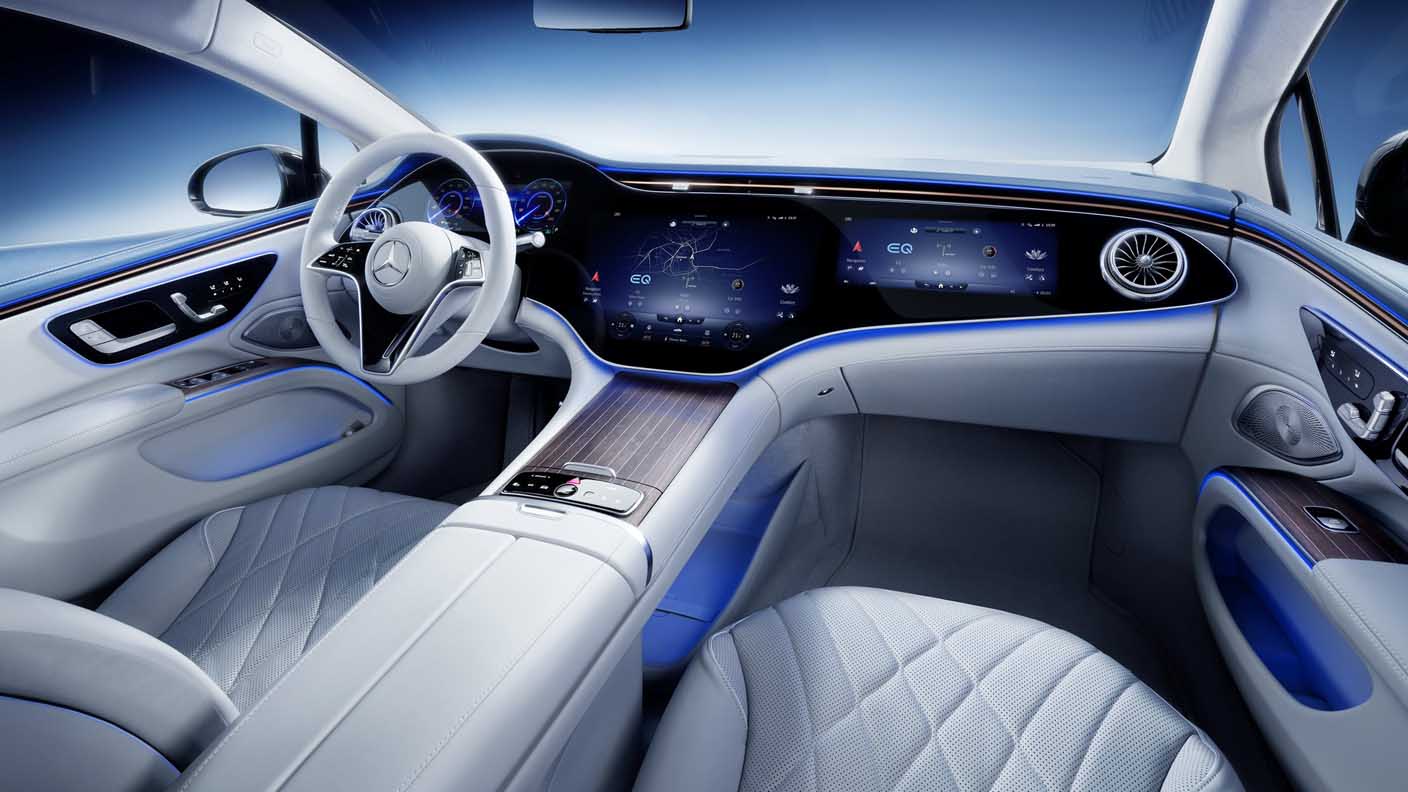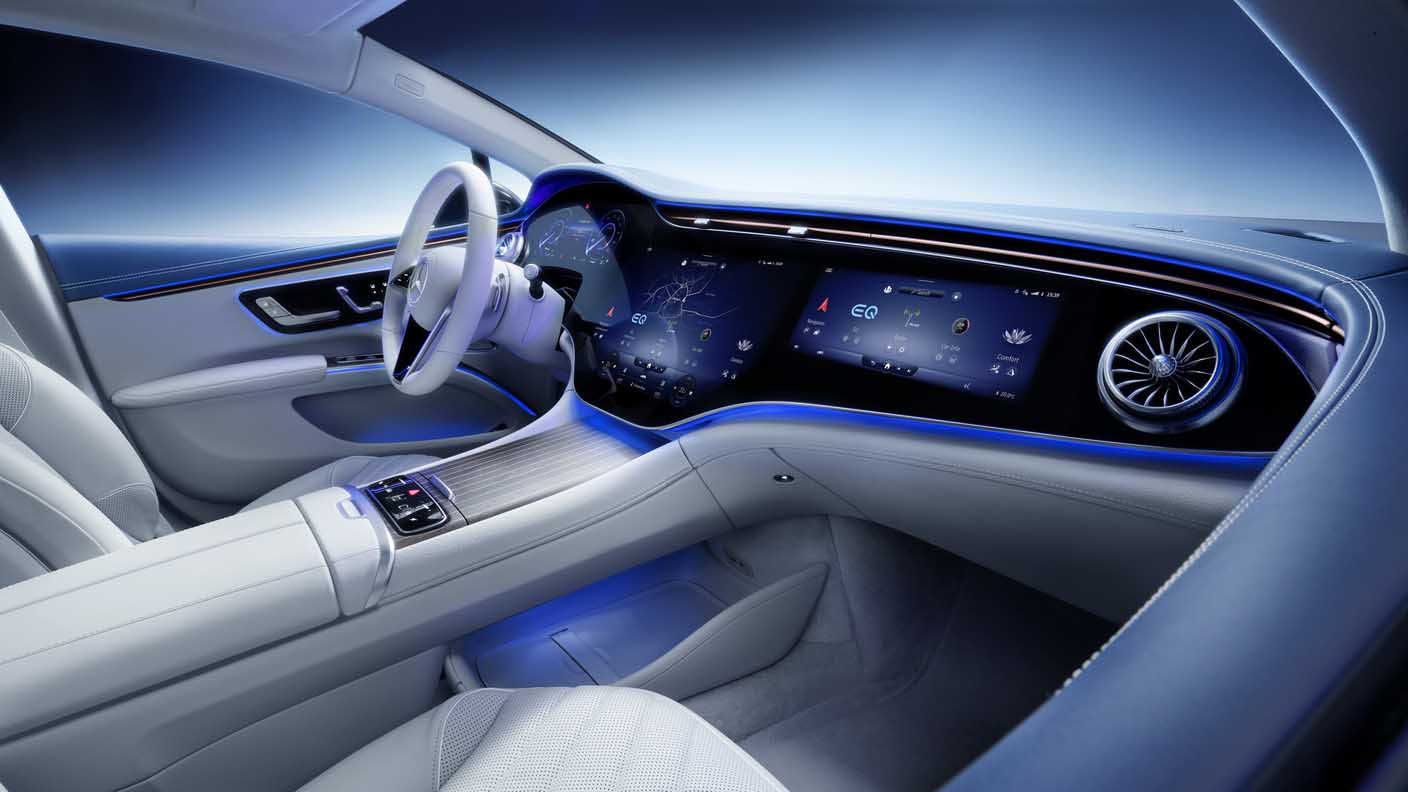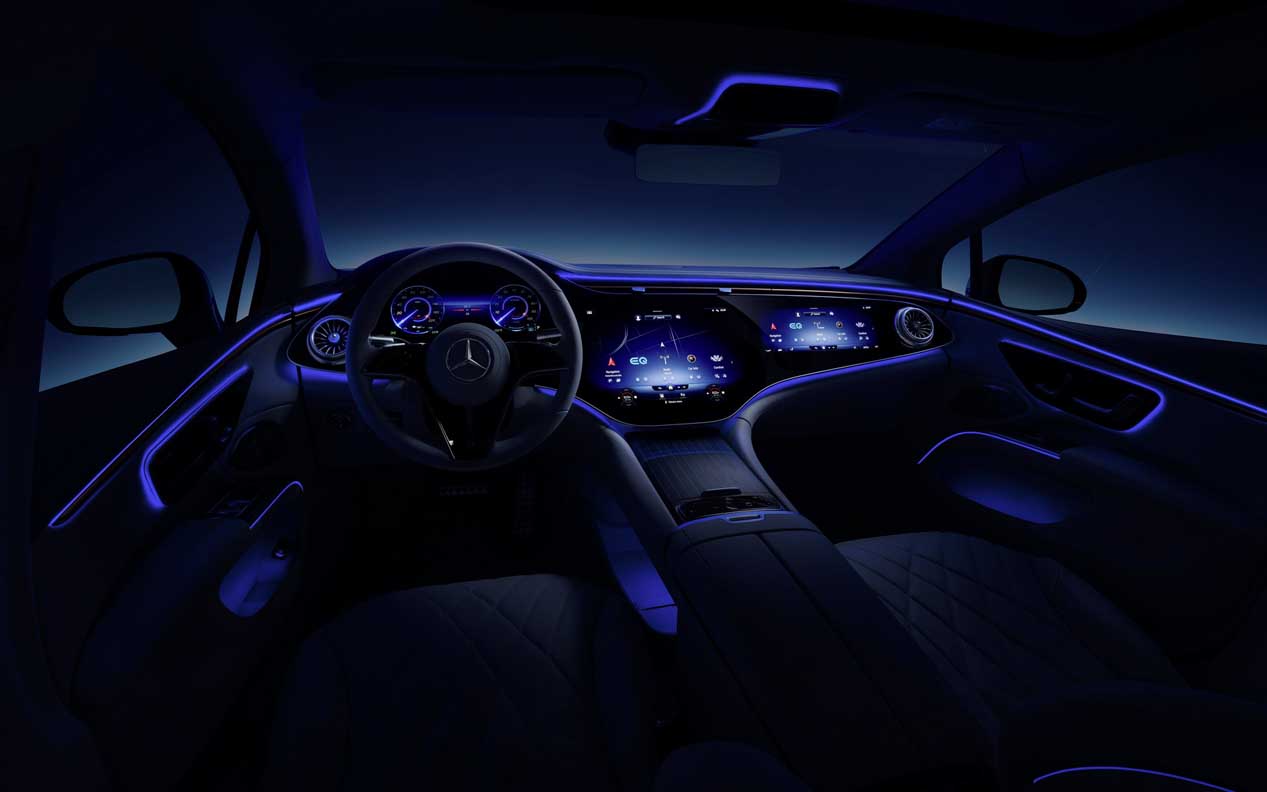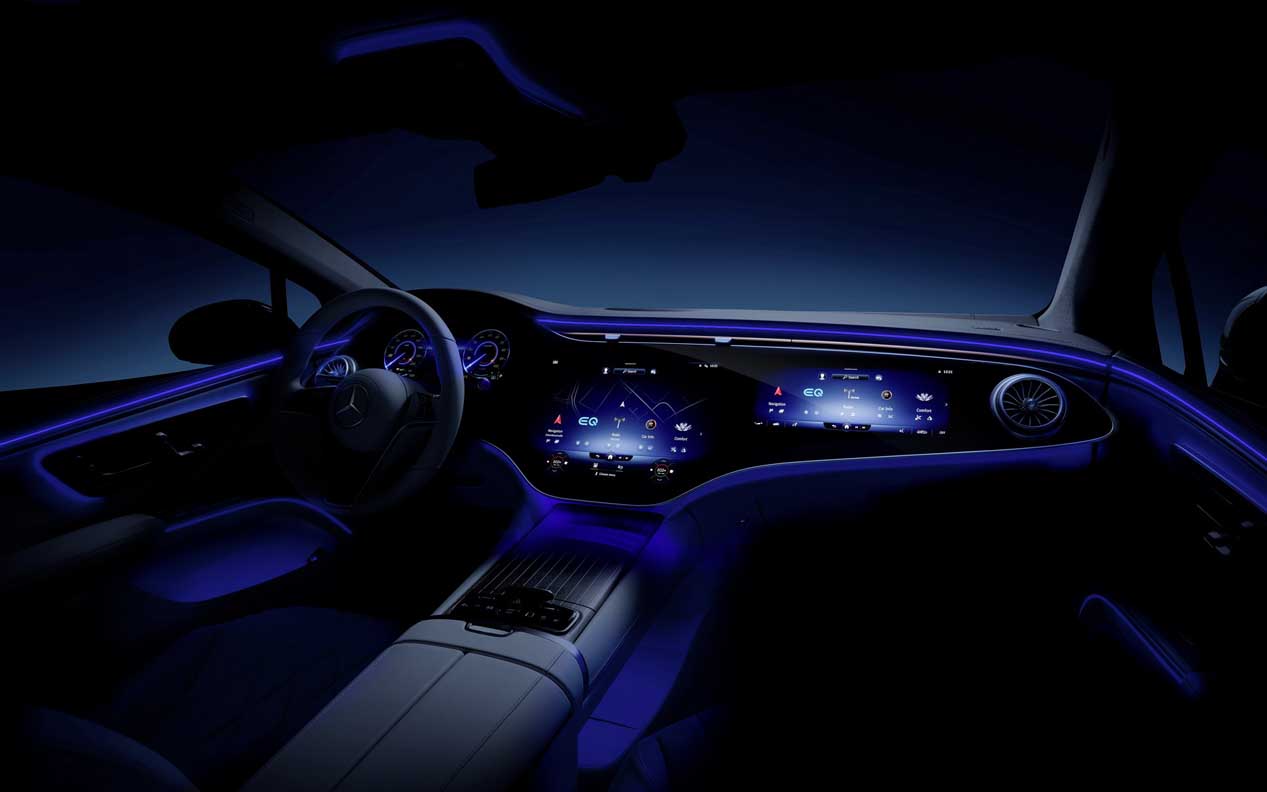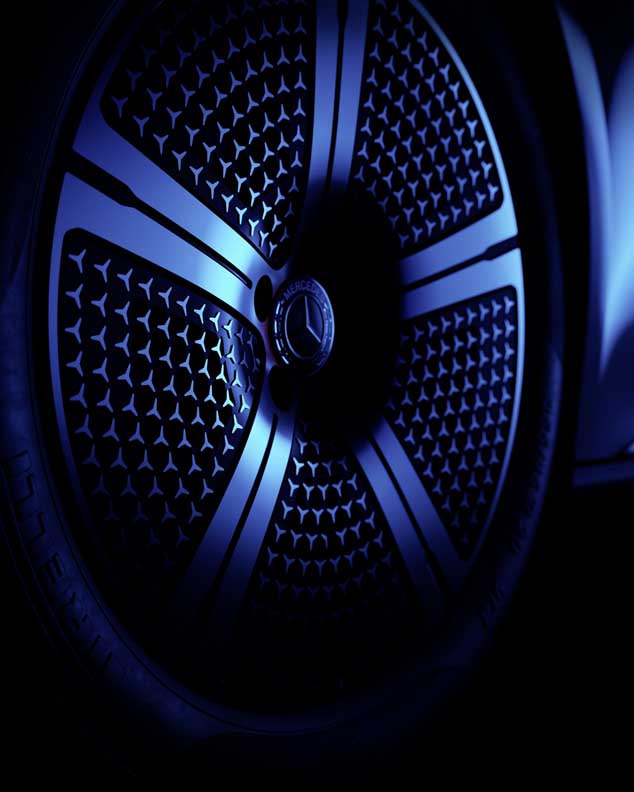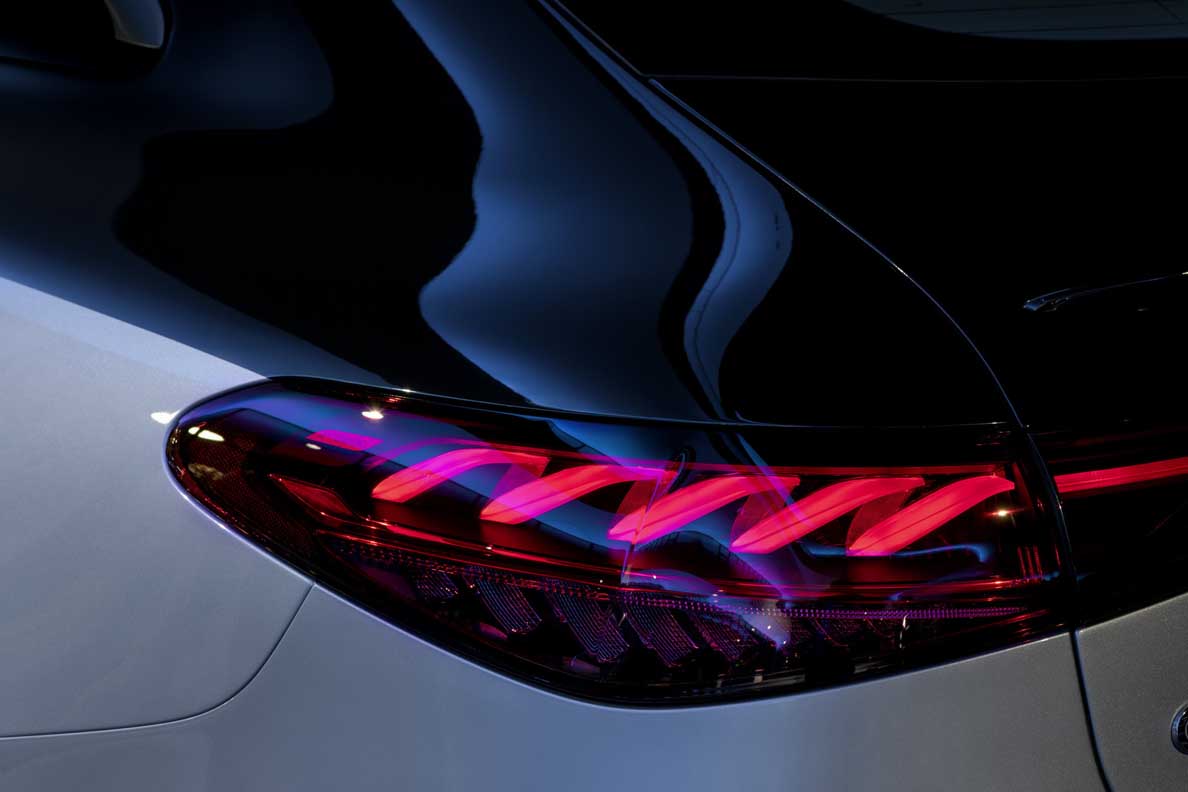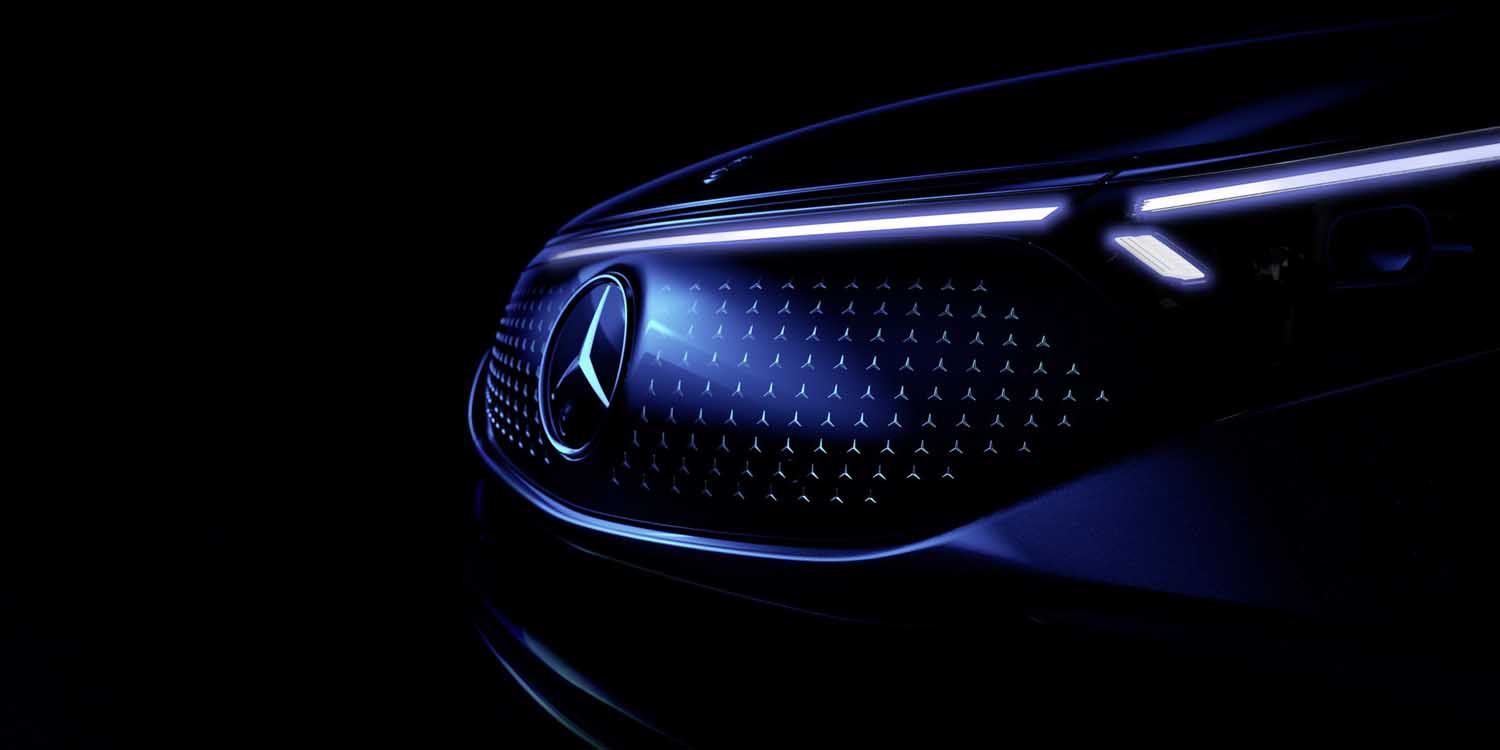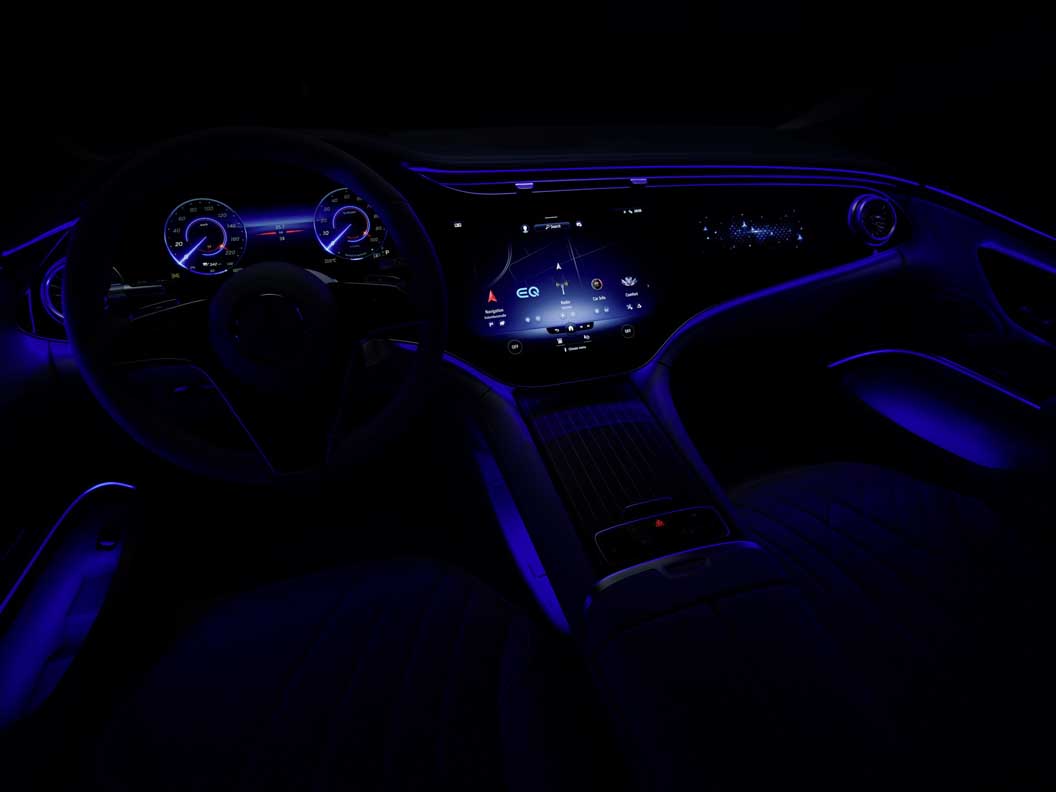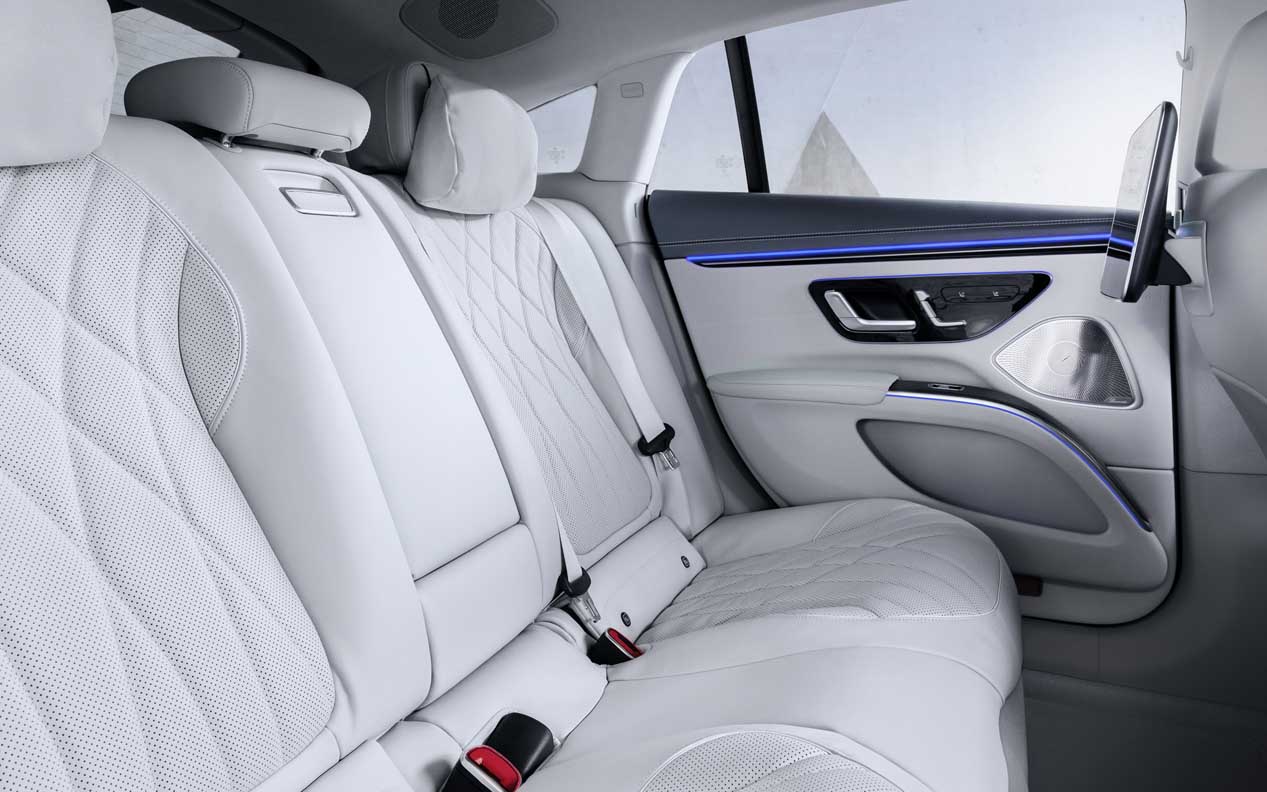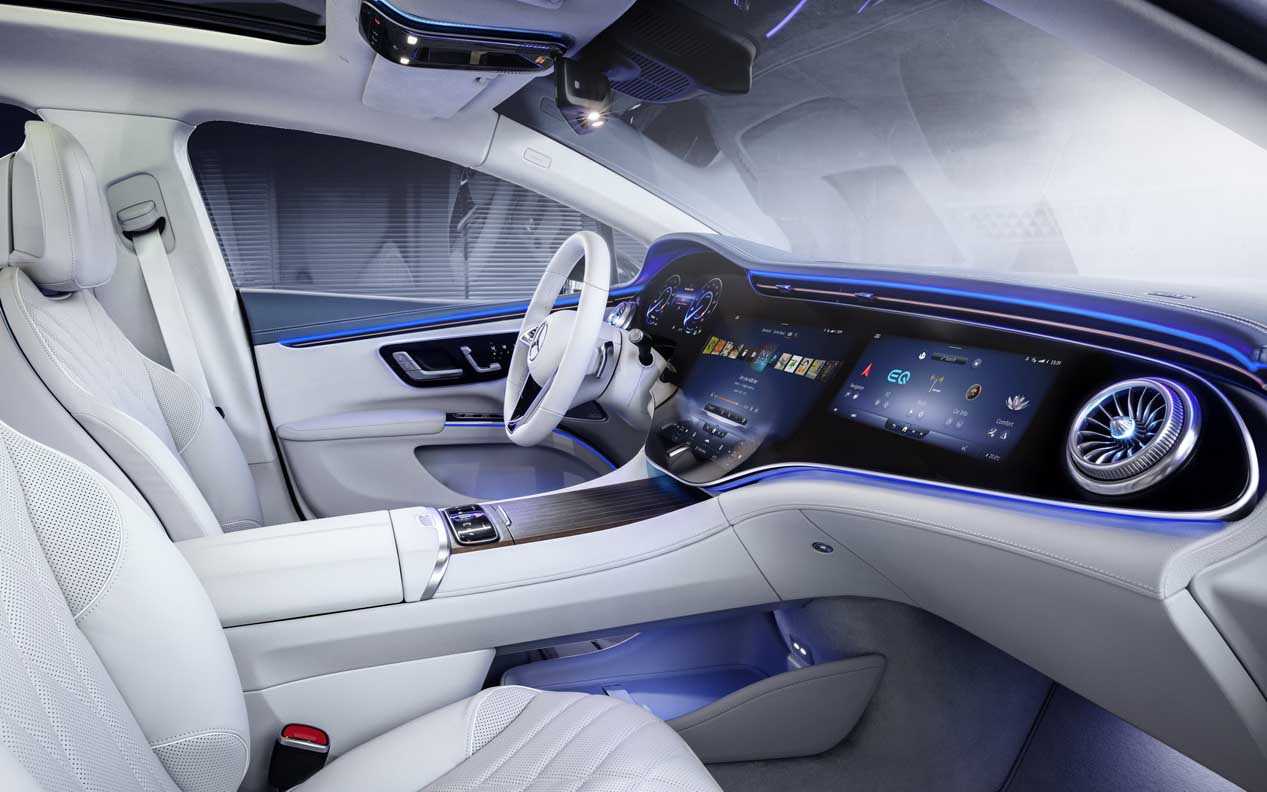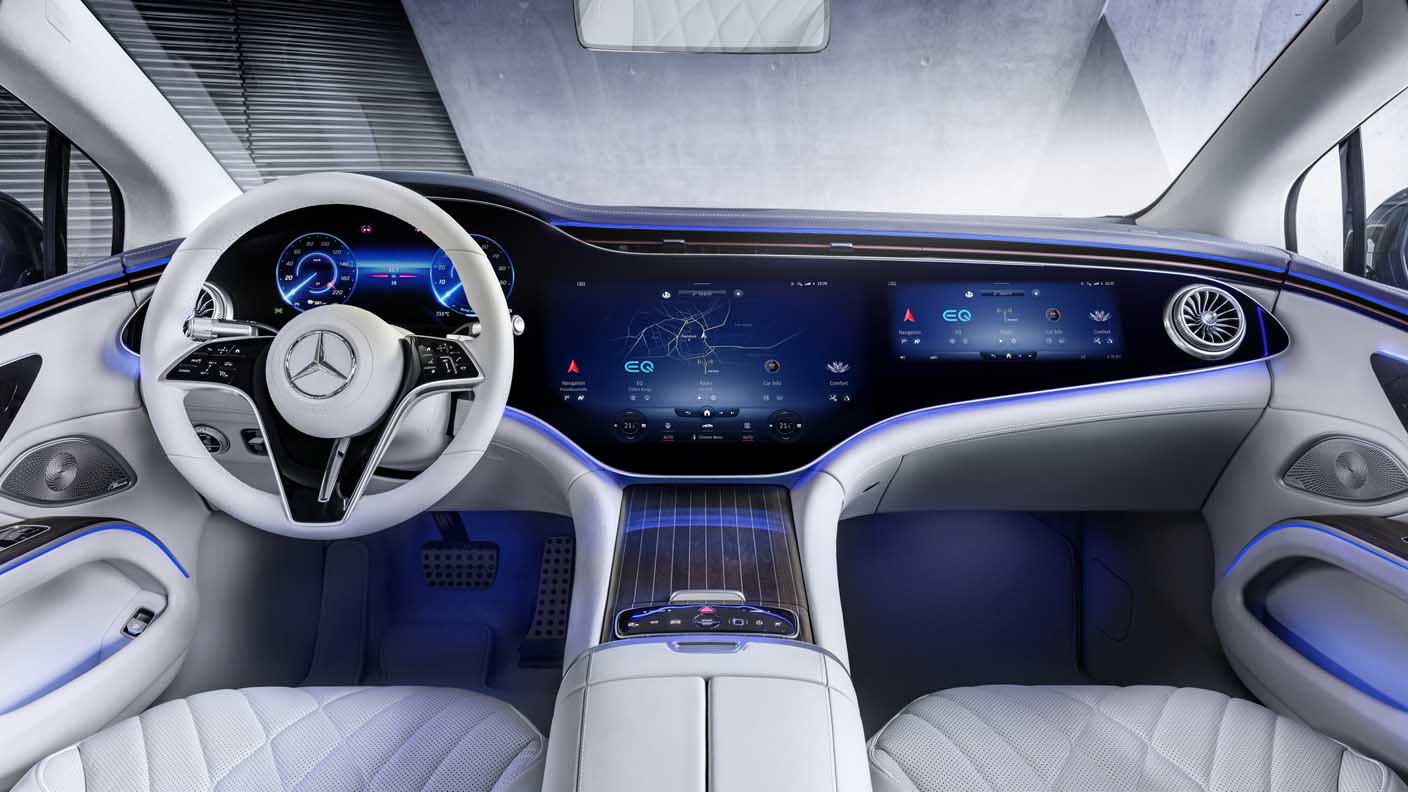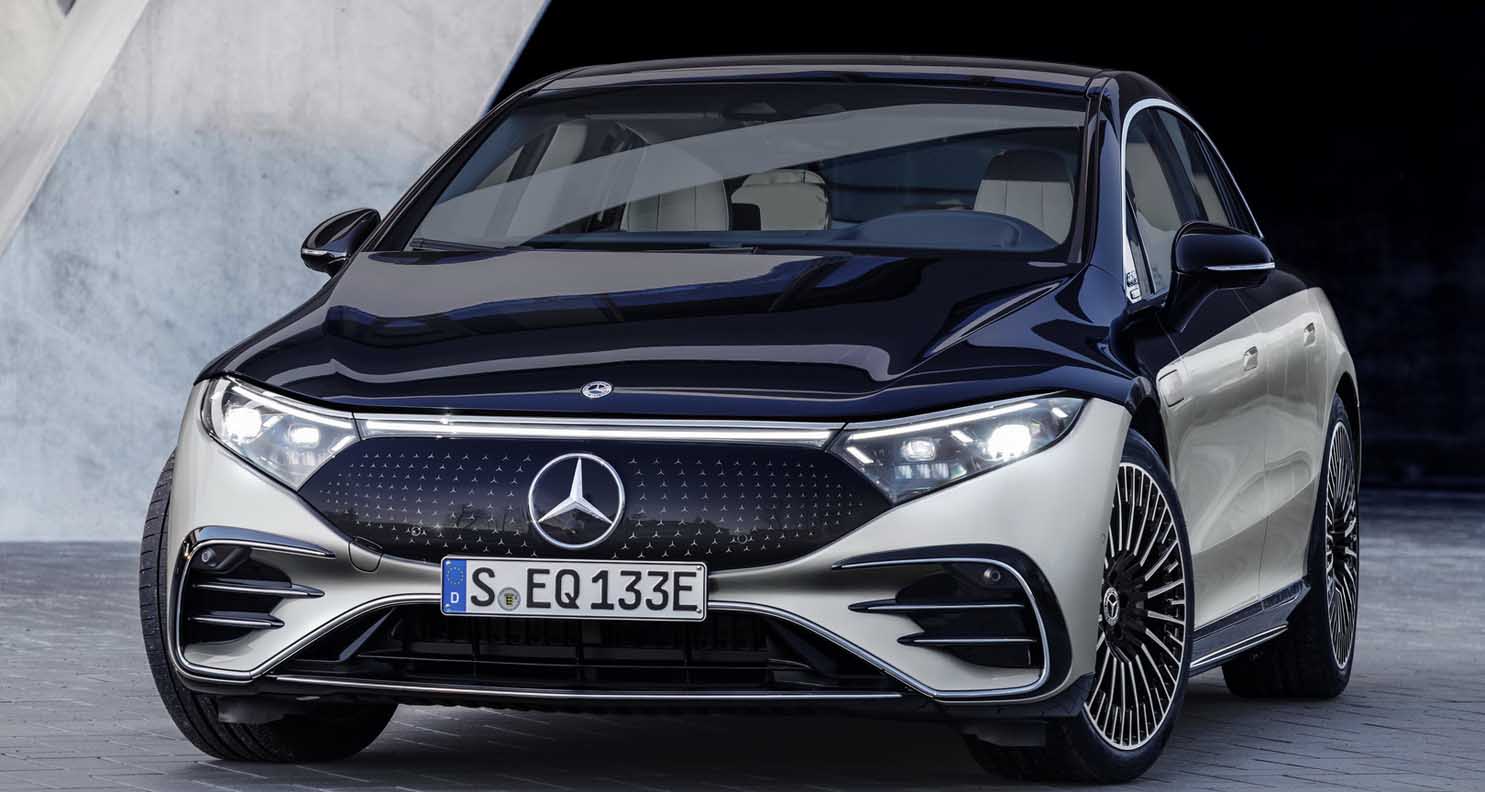
The Mercedes-EQ EQS Luxury Saloon redefines its segment as the first all-electric luxury sedan from Mercedes-EQ. It is the first model built on the new modular electric architecture. This completely new concept allowed for a rigorous Purpose Design approach. The vehicle seamlessly fuses technology, design, functionality, and connectivity. This new flagship represents a significant milestone in the brand’s journey toward carbon-neutral mobility. It is built with sustainability in mind, using resource-saving materials like recycled yarn carpets.
Purpose Design and World Record Aerodynamics
This saloon is clearly distinguishable from combustion engine vehicles at first glance. The design features one-bow lines and a cab-forward stance with a fastback silhouette. This clean, seamless design reflects the brand’s Sensual Purity philosophy. Through meticulous detail work, the EQS achieved a new cd best value of 0.20. This makes the EQS the most aerodynamic production car in the world. The outstanding aerodynamics directly benefit the driving range and quiet operation.

The Iconic Black Panel Front
The entire front end is combined into a distinctive ‘Black Panel’ unit. Innovative headlights connect via a light band, forming a distinctive face. The Black Panel radiator grille can be optionally enhanced with a three-dimensional star pattern. This Mercedes-Benz pattern is a nod to the original Daimler-Motorengesellschaft star. This aesthetic approach positions the EQS as the model for a new generation of electric luxury. The sensors for the driver assistance systems are all cleverly integrated within this panel.
Interior Dominated by the MBUX Hyperscreen
The optional MBUX Hyperscreen is the absolute highlight of the interior. This massive, curved screen unit stretches from A-pillar to A-pillar. Three separate screens appear to merge seamlessly under one large cover glass. The system uses adaptive software and Artificial Intelligence to adapt to the user. It provides personalized suggestions for various functions. The crucial zero layer concept ensures that the most important applications are always readily available.
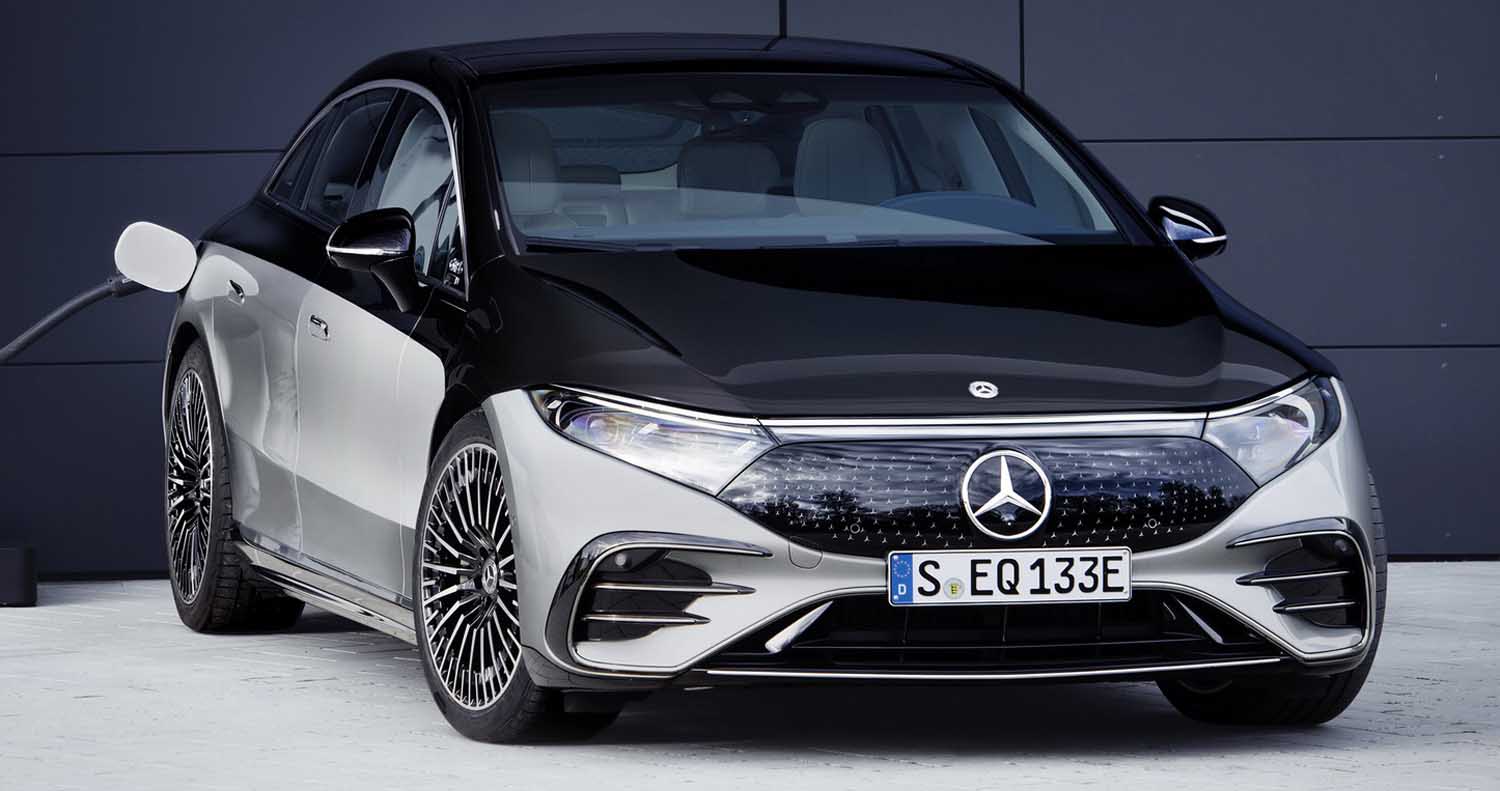
Comfort and Air Quality
Mercedes-Benz prioritizes interior air quality with the ENERGIZING AIR CONTROL PLUS system. This includes a HEPA filter with an extremely high filtration level. The filter is capable of trapping fine particles and pollen. An activated charcoal coating further reduces odors, sulfur dioxide, and nitrogen oxides. For convenience, the EQS also offers optional automatic comfort doors for the front and rear passengers. These doors feature obstacle detection for safety.
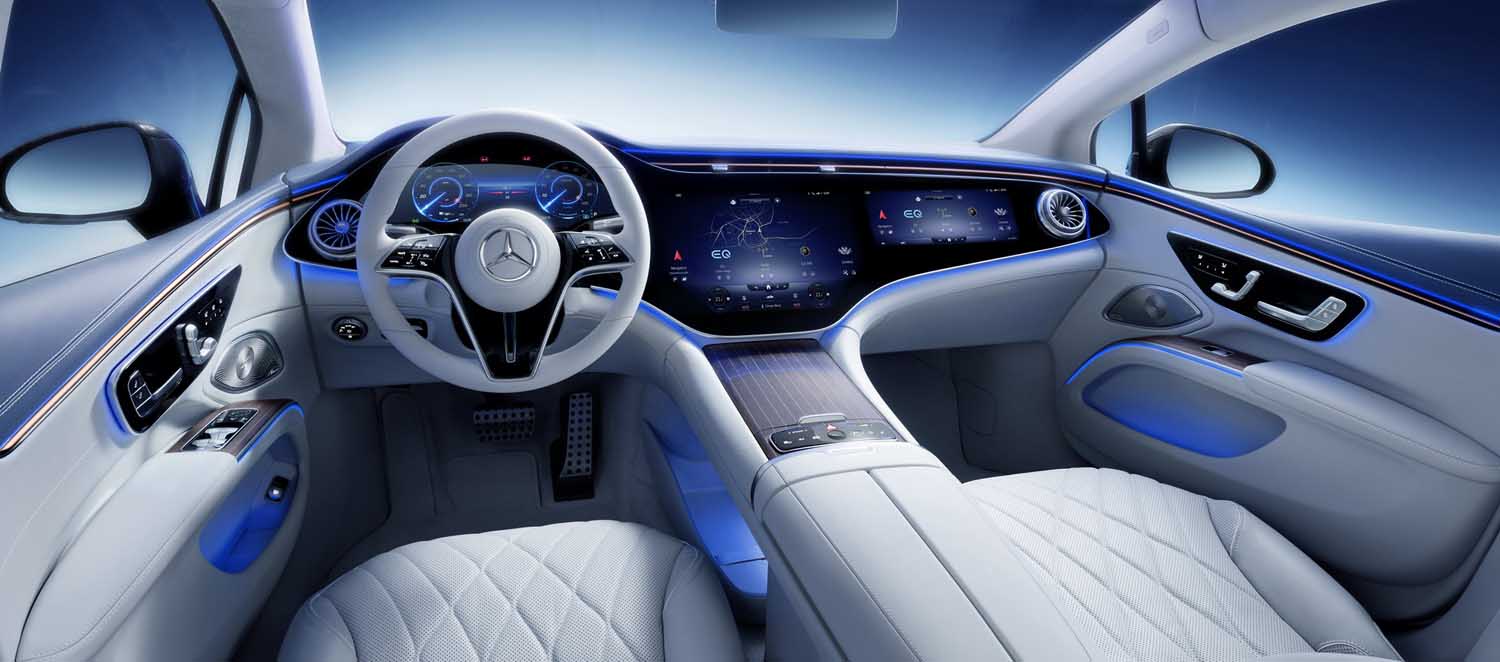
Battery, Range, and Charging
The EQS offers exceptional range, delivering up to 770 kilometers based on the WLTP cycle. The larger of the two available batteries offers a usable energy content of 107.8 kWh. Charging is extremely efficient at up to 200 kW at DC fast charging stations. This high-speed charging capability can replenish up to 300 kilometers of range in just 15 minutes. Furthermore, the intelligent Navigation with Electric Intelligence feature plans the most convenient route, including all necessary charging stops. The EQS supports up to 22 kW AC charging at home or public stations.
Performance, Recuperation, and Handling
The powertrain of the Mercedes-EQ EQS Luxury Saloon meets high expectations for the S-Class segment. The EQS 450+ offers 245 kW of power, while the EQS 580 4MATIC delivers 385 kW. The powerful EQS 580 4MATIC produces a maximum torque of 855 Nm. It can accelerate from 0 to 100 km/h in just 4.3 seconds. Top speed for both models is capped at 210 km/h. The EQS utilizes intelligent energy recovery, achieving up to 290 kW of recuperation power. This high level of regeneration allows for deceleration to a complete standstill without using the brake pedal. Standard rear-axle steering with a 4.5-degree angle dramatically aids maneuverability. An optional upgrade increases the steering angle to ten degrees, providing a turning circle of just 10.9 meters.
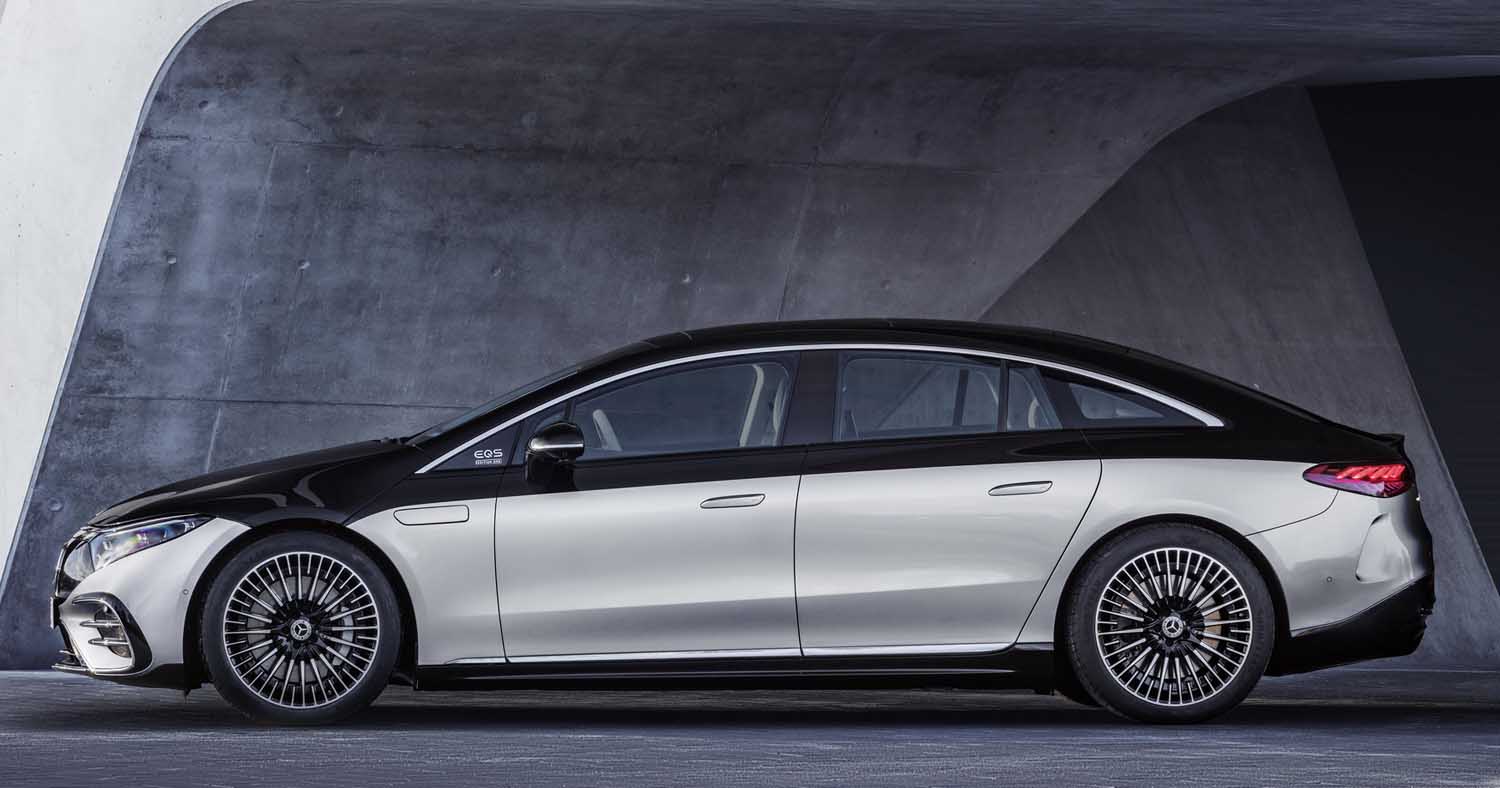
Summary of the Mercedes-EQ EQS Luxury Saloon
The Mercedes-EQ EQS Luxury Saloon is a comprehensive and progressive electric flagship. It combines extraordinary efficiency from its record-breaking 0.20 cd value with impressive range, offering up to 770 kilometers. The car’s innovative architecture enables high performance, with the top 4MATIC model generating 385 kW. Its cabin is defined by the revolutionary MBUX Hyperscreen and features like the HEPA filtration system. Through its meticulous design and cutting-edge technology, the EQS sets a new standard for the electric luxury segment.
